The investments made through Community Benefit Programs (PBC) are Ecopetrol’s direct contribution as a company in the hydrocarbons sector, by means of sustainable social investments deriving from the Exploration and Production and Technical Evaluation contracts and agreements entered into with the National Hydrocarbons Agency – ANH. This social investment is aligned with the social policies of the State, and in compliance with the goals proposed in the 2030 Agenda and with Sustainable Development Goals – SDGs, and seeks to improve the quality of life of the communities adjacent to the areas of operation of the organization.
In 2022, Ecopetrol invested 3.268 BCOP in PBCs, executed in 15 projects nationwide. Ecopetrol articulates and creates synergies between mandatory social investments such as PBCs and strategic (voluntary) investments. It similarly promotes and facilitates the convergence of mechanisms and sources of social investment available in conjunction with local and national governments, in order to maximize the impacts of said projects on the communities.
| Region | Amount (Million COP) |
|---|---|
| Orinoquía | 1,967 |
| Sur | 936 |
| Catatumbo-Arauca | 365 |
| Total | 3,268 |
In order to strengthen the relationship between the community and the Company, Ecopetrol, within the framework of its corporate social responsibility practices, seeks to improve the quality of life of stakeholder groups by awarding “Assignments free of Cost,” prioritizing the requests submitted by entities located in the areas of operation and their area of influence.
As of December 31, 2022, Ecopetrol made assignments free of cost in the regions of: Central, Orinoquía, and Andina, with materials required by different municipalities such as: Rionegro, San Vicente de Chucurí, Concepción, and Puerto Parra (Santander); San Carlos de Guaroa and Acacías (Meta); Paz de Ariporo (Casanare); Medina (Cundinamarca); and the Cooagropaz Cooperative (Huila). The Company similarly assigned land to the municipality of Tibú (Norte de Santander) for the construction of a mega school in the industrial zone of this municipality.
The cost of the materials and land assigned amounts to 508,195,765 COP, with a total of 10 awards aimed at the construction, maintenance, improvement, and adaptation of different community structures, such as pedestrian and vehicular bridges in rural areas, parks and community education and sports venues, community restaurants, and cattle barnyards, among others.
In 2022, the Ecopetrol Group continued to lead the implementation of the Works for Taxes mechanism31 in Colombia, with the highest participation in the country, assigning 16 projects during this term in the amount of 155.216 BCOP, which will benefit more than 128,000 Colombians.
With these projects, the Ecopetrol Group accumulates a total assignment of 59 projects since the beginning of the program, in the amount of 557.608 BCOP, which corresponds to 39% of the total assigned in the country.
During 2022, the Ecopetrol Group completed eight (8) projects amounting to 101.374 BCOP that benefitted more than 276,556 inhabitants in 14 municipalities in four (4) departments around the country.
The resources executed by Ecopetrol under the Works for Taxes mechanism in the period of 2022 amount to 33 BCOP in Public and Community Infrastructure investments, including the urban area paving projects in Paz de Aríporo (Casanare), with an execution of 9.87 BCOP, and the secondary road improvement in Paujil Cartagena del Chiará Stage 3 (Caquetá), with an execution of 8.309 BCOP, which together, account for 55% of the total resources executed in Works for Taxes.
| Line of investment | 2022 Results |
|---|---|
| Public and community infrastructure (Ecopetrol Construye) | Km of roads intervened: 28 |
*Metas certificadas 2022
(GRI 201-1; 11-14-2) (WEF 18, 21, 32)
| Category | Amount | % of the total amount |
|---|---|---|
| Assignments free of cost | 508,195,765 | 0.178 |
| Strategic (voluntary) social and engagement investments | 284,399,776,454 | 99.738 |
| Sponsorships related to social causes and promotion of the Ecopetrol brand | 238,195,000 | 0.084 |
| Total | 285,146,167,219 | 100 |
(GRI 201-1; 11-14-2) (WEF 18, 21, 32)
| Types of Contribution | Unit of measurement | 2022 |
|---|---|---|
| Strategic (voluntary) social and engagement investment + sponsorships related to social causes and promotion of the Ecopetrol brand | COP | 284,637,971,454 |
| Volunteer workers | COP | 0 |
| Free-of-cost asset transfer | COP | 508,195,765 |
| Operating costs | COP | 71,249,829,641 |
1,905 formal participation sessions were held in 2022 for society, the community, and the local government, of which 1,776 were in-person and 129 virtual, in the areas of interest to Ecopetrol o with the presence of the Company, guaranteeing a 50.5% coverage (198 assets in total) for production assets and 58.7% (179 projects in total) for development projects, based on community participation and consultation.
| Year | % |
|---|---|
| 2021 | 42.2 |
| 2022 | 50.5 |
| Year | % |
|---|---|
| 2021 | 49.4 |
| 2022 | 58.7 |
The topics covered included the identification of impacts, possible risks, and the execution of mitigation and adverse impact management efforts for the projects.
Below are the scenario figures by region:
Inasmuch as Ecopetrol recognizes and respects diversity, it interacts with ethnic groups in pursuit of a constructive relationship, mindful of the dynamics and processes between these communities, their organizations, and the State. The Company has adopted internal guidelines and procedures for its engagement with ethnic communities to conduct prior consultations and address situations of economic or physical resettlements, in accordance with Colombian legislation and the highest international standards, as established in the Human Rights section.
These instruments contain guidelines on the identification of affected communities and stakeholders, the implementation of a participation plan, access to relevant information, the importance of allowing communities to express their views on operational and project-related risks, the preservation of cultural heritage and other environmental and social impacts and mitigation measures, the incorporation of the perspectives of affected communities in operating and project decision-making, grievance mechanisms for affected communities, including mechanisms to preserve cultural heritage, and the need to keep affected communities and other stakeholders informed.
(GRI 413-2, 11-15-3) (WEF 28E) (SASB EM-EP-210b.1) (SFC XVII)
All operations and projects undertaken by Ecopetrol follow international due diligence standards, especially in Human Rights, as well as the regulations
and national legal requirements set forth in the Constitution and established by law and by environmental authorities, such as the Ministry of Environment and Sustainable Development – MADS, the National Authority for Environmental Licenses – ANLA, and the Regional Autonomous Corporations – CAR, as well as the Ministry of the Interior for the specific case of prior consultations.
Additionally, the Company relies on an Social Settings Management Strategy, which establishes the importance of considering the rights of the Society, Community, and State stakeholder group.
By means of these instruments, Ecopetrol ensures the identification and assessment of social impacts and the definition of prevention, mitigation, control, and compensation measures. To identify impacts, ample and sufficient citizen participation spaces are organized, in pursuit of a respectful and representative engagement that favors active listening and allows access to information in a transparent, comprehensive, and timely manner, that is also adapted to the language and cultural approach of each case. In this sense, Ecopetrol conducts the necessary technical, environmental, and social studies to operate in a sustainable and balanced manner in the territories.
Articulation with State institutions for the management of impacts is deployed from local to national governments. It similarly involves the different associations, industry representatives, and community and State guarantors, in order to support the right to citizen participation and the peaceful resolution of conflicts.

| Region | Operations | Impact identified | Management measures |
|---|---|---|---|
| Oriente | Production in the Rubiales and Caño Sur fields in the municipality of Puerto Gaitán, Department of Meta. | 1. Changes in accessibility, mobility, and local connectivity: impact on the joint-use road, especially during wintertime (Caño Sur – Rubiales and Alto Neblinas-Rubiales). 2. Generation of social conflicts: formal appeals filed with institutions and de facto channels for the procurement of goods and services. 3. Presence of contractors working simultaneously. 4. Change in population dynamics and type of local workforce: increase in population density due to dependent migratory dynamics attributable to the industry. 5. Changes in the productive and commercial structure of local companies: generation of goods and service companies dependent on the industry. 6. Increased or decreased interaction between ethnic communities and foreigners: low community organization of ethnic groups and investment expectations with a differential focus. 7. Changes in the interpersonal ties between citizens and their institutions 8. Generation of conflicts over land use | 1. Timely and transparent information and communication that enhances engagement with institutional support. 2. Multi-stakeholder, systematic, and anticipated social dialogue for the participatory construction of shared approaches on the territory and due diligence in light of de facto procedures. 3. Joint taskforces in the strategic and tactical articulation with operators for the comprehensive management of the territory. 4. Management of contractors to address impacts 5. Company’s tactical and strategic articulation for the comprehensive management of the territory. 6. Economic diversification by strengthening productive vocations to generate non-oil jobs. 7. Reinforcement of Community Action Boards in the development of community management capacities and tools for dialogue, citizen participation, and transparency. 8. Timely and coordinated execution of Community Benefit Programs, both in compliance with ANH obligations and pursuant to strategic voluntary investments. |
| Andina Sur | Upstream: Acae-San Miguel (Puerto Colón), Arrayán, Balcón, Brisas, Cebu, Churuyaco, CPOI, Dina Norte, Espino, Hormiga, La Jagua, Loma, Larca, Loro, Mansoyé, Orito, Palermo, Palogrande, Pijao, Quiriyana, Río Ceibas, San Antonio, San Francisco, Santa Clara, Sucio, Sucumbíos, Tello, Tempranillo, Tempranillo Norte Superior, Tenay, Yaguará, and Yurilla fields. Putumayo: (Orito, Puerto Caicedo, Puerto Asís, Guamuez Valley, San Miguel) Huila: (Neiva, Aipe, Palermo, Tello, Villavieja, Yaguará) Nariño: (Ipiales) | Putumayo: 1.Change in employment dynamics: non-standardized practices outside the legal framework of contractor companies. 2. Changes in accessibility, mobility, and local connectivity: joint use and deterioration of roads and public infrastructure, especially during wintertime. 3.Social conflicts due to ethnic issues: expectations regarding differential inclusion in local agendas and labor participation. 4. Cumulative impacts generated by the industry. 5. Social conflicts due to social investment expectations. Huila 5. Changes in working conditions: generation of employment in energy transition projects with different working conditions (non-oil wages and less labor). Huila and Putumayo 6. Social conflicts due to changes in the employment, goods, and services dynamics: youth populations, women, professionals, seeking opportunities 7. Generation of social conflicts: new local players in search of social and political support. | 1. Information and communication programs focusing on social dialogue as a tool for mutual understanding, with an emphasis on employability and goods and services. 2. Engagement mechanisms with communities and articulation within the Company for the comprehensive management of the territory. 3. Diverse and inclusive social dialogue scenarios for the construction of a joint approach for the territory. Reinforcement of Community Action Boards. 4. Promote the active participation of the population in the public employment system (SPE, as per its Spanish acronym) to reduce the levels of conflict. 5. Redevelopment and communication of the social investment portfolio. |
| Piedemonte | Yopal, Aguazul, Tauramena Cusiana, Cupiagua, Recetor, Pauto, Floreña Paz de Ariporo fields Llanos 9 Block (Turupe 1 Exploration Well). | 1. Changes in accessibility, mobility, and local connectivity: joint use and increased deterioration of access roads, especially during wintertime. 2. Changes in migration phenomena: arrival of population from other areas of the country in search of employment opportunities in the oil industry. 3. Changes in the economic activities in the area: changes in land use and transformation of production practices. 4. Changes in demographic variables: sudden change in the number of inhabitants in the area due to factors related to the transformation of opportunities deriving from the project. 5. Generation of social conflicts: dispute due to differing opinions on the amount and coverage of employment opportunities arising from job vacancies. 6. Changes in cultural dynamics: changes in the community’s attachment to its territory due to the arrival of foreign personnel. | 1. Meetings with regional transit authorities to learn about and share impressions on the most recurring road-related issues. 2. Consolidation of Solidarity Funds and reinforcement of management skills for Community Action Boards. 3. Support for local economic development. 4. Newsletters including content of interest to the community. 5. Informative sessions for municipal authorities and communities. 6. Organic strengthening of Community Action Boards in terms of their responsibilities and internal values as community players. 7. Raising awareness on the proper exercise of the rights and duties of communities and of Community Action Boards. 8. Cultural events incorporating artistic expressions and as an intercultural meeting place to strengthen social cohesion and the construction of the social fabric. |
| Caribe | Guajira (Uribia, Manaure, Maicao, Dibulla, Riohacha) Bolivar (Cartagena) Cesa (El Copey) | 1. Generation of expectations in the population: development of offshore projects associated with prior consultations and the non-definition of the black line in offshore, and the lack of awareness of stakeholder groups regarding labor recruitment regulations. 2. Generation of conflicts between stakeholders: new local players in search of social and political support. 3. Generation and alteration of social conflicts due to differing criteria for taking action between companies of the Ecopetrol Group in offshore and onshore projects. 4. Generation of expectations in the population due to the energy transition roadmap: employment expectations and configuration of Energy Communities. | 1. Information and communication program focused on spaces for social dialogue as a tool for common understanding, with a focus on employability and goods and services. 2. Consolidating relationships of trust, mainly with ethnic groups and women under a differential approach, by implementing spaces for dialogue and improving their capacities. 3.Generation of synergies as the Ecopetrol Group. 4. Contribution to local development based on the consolidation of the sustainable development portfolio with investments in water, gas, education, circular economy, and green businesses. 5. Permanent, inclusive, timely, and transparent dialogue with new Community Action Boards, the ethnic groups of La Guajira and Cartagena-Bolívar, and with regional contractors |
| Central | Santander (Barrancabermeja, Puerto Wilches, Sabana de Torres, San Vicente de Chucurí, Rionegro). Cesar (San Martin). Antioquia (Puerto Nare, Puerto Triunfo, Yondó). Bolivar (Cantagallo). Boyacá (Puerto Boyacá). | 1. Change in employment dynamics: Contractor companies misaligned in the processes of hiring local labor. 2. Social conflicts due to changes in employment, and goods and services dynamics: youth populations, women, professionals, and unions in search of employment opportunities. 3. Conflicts between public and private stakeholders: in search of social and political support. 4. Changes in economic activities in the area: changes in land use and transformation of productive practices. 5. Changes in migration phenomena: arrival of population from other areas in search of job opportunities within the oil industry. 6. Changes in accessibility, mobility, and local connectivity: joint use of access roads close to housing units and increased deterioration, especially during wintertime. 7. Impact on the landscape due to noise, light, and particulate matter. 8. Conflict for damages against third parties. 9. Temporary and permanent resettlements | 1. Information and communication program to strengthen skills for social dialogue and conflict management. 2. Implementation of articulation models for the segments in Magdalena Medio. 3. Management of neighborhood minutes in interdisciplinary work. 4. Emphasis on the topics of employment, labor, and goods and services with contractors. 5. Strengthening productive skills to generate employment outside the industry for economic diversification. 6. Prioritize the hiring of local labor and the procurement of local goods and services. 7. Understanding of the dynamics with a differential ethnic approach. 8. Communication of Ecopetrol’s strategic social investment in the territory. |
| Centro Oriente | Cundinamarca (Ubalá, Medina, Paratebueno, Guaduas, Yacopí, Puerto Salgar). Tolima (Cunday, Carmen de Apicalá, Ortega, Espinal, and Melgar). Boyacá (Santa Maria). Valle Del Cauca (Yumbo and Palmira). Caldas (La Dorada). | 1. Changes in accessibility, mobility, and local connectivity: joint use and increased deterioration of access roads, especially during wintertime. 2. Increase or decrease of pre-existing conflicts: impacts generated by other industries previously installed in the territory that have generated mistrust in the population and in the development of new projects and the entry of the oil industry. | 1. Development of educational programs, social dialogue. 2. Information and communication program focused on spaces for social dialogue as a tool for common understanding, with a focus on environmental issues, employability, and goods and services. 3. Investment in engagement initiatives to build trust. |
| Orinoquía | VEX: Meta: (Cubarral, Granada, El Castillo, Lejanías, San Martín de los Llanos, Puerto Lleras, San Carlos de Guaroa, San Juan de Arama, Puerto López, Mapiripán, Fuente de Oro). Producción: Meta: (Villavicencio, Acacías, Guamal, Castilla la Nueva). | 1. Changes in interpersonal ties between citizens and their institutions: labor participation conflicts generating gaps and differences between the same population in the territory. 2. Invisible borders between municipalities in Meta, added to the concentrated presence of contractors working simultaneously. 3. Generation of social conflicts: Emergence of new local players (guilds, associations, and new unions) seeking social and political support. 4. Conflict over new projects in the low emissions business line: disagreement over salary differences and volume of labor recruitment in these projects compared to activities typical of the hydrocarbon industry. 5. Changes in economic activities in the area due to poor employment conditions: breach of labor obligations by contractor companies. | 1. Early and systematic, timely and transparent information and communication program with institutional support and multi-stakeholder social dialogue. Participatory construction of shared approaches for the territory and due diligence in light of de facto proceedings. 2. Joint taskforces for strategic and tactical articulation with operators for the comprehensive management of the situation in the territories, as well as management of contractors to address impacts. 3. Strengthening of productive skills to generate employment outside the industry to trigger economic diversification. 4. Reinforcement of Community Action Boards (JAC) to strengthen their community management capacities and tools for dialogue, as well as citizen participation and transparency. 5. Timely and concerted execution of Community Benefit Programs, both in compliance with ANH obligations and pursuant to the strategic voluntary investment. |
(GRI 2-25, 2-26, 11-15) (WEF 5)
In order to ensure responsible business conduct, Ecopetrol establishes and provides Stakeholder Groups with the necessary mechanisms and spaces to communicate their expectations, disagreements, and needs, while ensuring a timely and thorough response to the petitions, complaints, claims, suggestions (PQRS), and compliments received.
In the same way, participation sessions are organized for Stakeholder Groups to become informed about the activities conducted by the Company and to understand their perceptions, in order to build a close and trusting relationship with them.
For more information about the Citizen Participation Office, visit the Ecopetrol website by clicking on the following link.
The information arising from the PQRS, as well as the different participation scenarios promoted by Ecopetrol and/or those in which it participates, allows the identification of opportunities for improvement in the Company’s processes and the structuring of alternative solutions to situations of dissatisfaction.
By managing and monitoring the requirements deriving from said interactions between Ecopetrol and its Stakeholder Groups, information can be obtained, which is then structured, analyzed, and converted into valuable information for decision-making by the different work teams, senior management, and government bodies.
55,575 PQRS were managed throughout 2022: 40,438 were petitions and 15,137 complaints and claims. Also, 543 congratulation messages were received, accounting for a timely management indicator of 99.94% (32 cases addressed outside the terms of the law).
| Group thematic area (TOP 10) | No. of cases |
|---|---|
| Dissatisfaction with healthcare services | 5,283 |
| Discontent with personnel selection and recruitment processes | 4,876 |
| Information request or of documentation related to Ecopetrol S.A. | 3,849 |
| Community support | 1,423 |
| Damage to third parties generated by Ecopetrol or by contractors | 1,226 |
| Dissatisfaction with pension issues | 1,070 |
| Incomplete or erroneous response to user requests | 923 |
| Information request or of documentation related to Ecopetrol S.A.'s contractor companies | 665 |
| Discontent with payroll settlement | 625 |
| Alleged breach of contractors' labor obligations | 613 |
| Other issues | 35,022 |
| Total | 55,575 |
In 2022, a total of 25 claims associated with labor practices were received through the OPC.
Receiving PQRS at Ecopetrol is a multi-channel service for people to submit their requests. These channels meet international standards in terms of being legitimate, accessible, predictable, equitable, transparent, rights-compliant, and participatory. The citizen service channels arranged by Ecopetrol are: ECO zones, customized service offices, assistance brigades, email, corporate call center, correspondence offices. The Stakeholder Groups that made use of the channels provided by Ecopetrol were: employees; pensioners and their beneficiaries; society, the community, and the local State; suppliers; customers; shareholders and investors; and the national State.
To understand the users’ perception of the mechanism, surveys are conducted every month on the usefulness and operability thereof.
The Citizen Participation Office monitors the relationships with its Stakeholder Groups. The purpose is to identify opportunities for process improvement using the PQRS received by the Company as a source of information, pinpointing expectations, non-conformities, process deviations, and alarms in the environment, and conducting a trend analysis of the PQRS and, in general, detecting situations that may affect the relationship by conducting monitoring reports, reporting PQRS sensitive to alarms, and using KRIs as a control limit methodology based on historical data.
By monitoring 17 grouped issues, Ecopetrol analyzes the behavior of 80% of all complaints received, allowing the Company and its decision makers to be alerted about the behavior of issues that entail business or process risks; once the trends and risk issues have been identified, an alert is sent to the Citizen Participation Office, which then conducts a root cause analysis and establishes improvement or mitigation plans to reduce said dissatisfactions to zero.
Ecopetrol has implemented guidelines with procedural and instrumental tools to ensure that the right of petition is managed. As part of the control and monitoring measures, indicators are implemented to measure the opportunity in citizen service, as well as internal management indicators to determine the quality and opportunity of the times established within the process. The whole process is supported by a technological management tool to control flows and times in accordance with current regulations. Furthermore, surveys are conducted to measure the satisfaction of petitioners with regard to the channels and the service. These are conducted every month using electronic channels and the deriving data is processed to obtain qualitative and quantitative results to identify actions for improvement in the process and the channels. Monitoring is conducted with a registration form in the management tool used by the Citizen Participation Office – Salesforce.
As part of continuous improvement, the PQRS received by the Company are permanently monitored to identify opportunities for improvement in the processes and to define actions to mitigate the causes of non-conformity presented by the Stakeholder Groups.
17 dissatisfaction issues were monitored in 2022 and, together with the areas responsible for the processes, six (6) improvement plans were generated with 141 actions completed in a timely manner, which impact the most relevant issues of four stakeholder groups in all regions in the country.
For the prevention of incidents caused by third parties, outside the management of internal incidents, Ecopetrol has adopted an Enabling Plan, which an instrument to implement a preventive physical security model based on Human Rights standards to comply with the scope established in the Social Settings Management Strategy and whose central pillar is the cultural principle of “Life First”.
The pillars of the Enabling Plan are the following: management in the protection of people, management in the protection of the Nation’s critical and strategic infrastructure, and management for the viability of the operation. These pillars are managed by analyzing security risks and identifying possible impacts on Human Rights, in accordance with the provisions of the international standard of Voluntary Principles on Security and Human Rights. Similarly, they constitute the foundation and roadmap for the implementation of lines of action for the management of identified risks, including attacks.
The four (4) terrorist attacks against Ecopetrol’s infrastructure in 2022 were recorded in the department of Santander, in the municipality of Barrancabermeja. These events occurred in the first quarter of 2022, as a consequence of illegal conduct. It is worth highlighting that the infrastructure of Ecopetrol’s subsidiaries and contractors was also affected by terrorist attacks. In order to minimize environmental and operating impacts, Ecopetrol articulated efforts with civil authorities and public forces for a quick intervention in these events and a timely reparation, as well as to guarantee the corresponding judicial investigations.
| Proven and probable reserves in or near conflict areas | Unit of measurement | 2022 |
|---|---|---|
| Number of proven reserves in or near conflict areas | 0 | |
| Total proven reserves | 1,680,555 | |
| Probable reserves in or near conflict areas | 0 | |
| Total probable reserves | 425,682 | |
| Percentage of net proven reserves in or near areas of active conflict | % | 0 |
| Percentage of net probable reserves in or near areas of active conflict | % | 0 |
Given that some of Ecopetrol’s areas of operation are affected by conflicts, thus increasing the risk of the Company, its suppliers, partners, and other related stakeholders of being involved in human rights abuses, Ecopetrol will therefore intensify its due diligence enforcement actions and will promote them along its value chain.
| Required information | Unit of measurement | 2022 |
|---|---|---|
| Number of interruptions | 664 | |
| Total duration of interruptions | Days | 970.25 |
* Includes projects executed by the Upstream segment’s Projects Vice Presidency. Non-technical interruptions had an impact on 82 projects.
(SASB EM-EP-210b.2) (SFC XVII)
The interruptions due to non-technical factors occurred mainly on account of blockages in the execution areas, external actions that disturbed public order, or because of the rainy season.
(GRI 2-7) (WEF 17) (SFC 7.4.1.1.1.VII)
| General labor indicators | Men | Women | Other | Undeclared | Total |
|---|---|---|---|---|---|
| Total number of employees | 7,068 | 2,428 | 0 | 0 | 9,496 |
| Employees under indefinite contracts | 6,608 | 2,266 | 0 | 0 | 8,874 |
| Temporary employees | 460 | 162 | 0 | 0 | 622 |
(GRI 2-7) (SFC 7.4.1.1.1.VII)
The total number of employees was 9,322 in 2021, and 9,496 in 2022, with a variation of 1.86%. The difference is given by new vacancies approved within the Company due to execution capacity and new operational needs.
(GRI 2-7) (WEF 17)
| Employees by region | Indefinite contract | Temporary | Total |
|---|---|---|---|
| Central | 3,084 | 306 | 3,390 |
| Bogotá | 3,230 | 121 | 3,351 |
| Caribe | 1,076 | 39 | 1,115 |
| Orinoquía | 864 | 69 | 933 |
| Sur | 346 | 27 | 373 |
| Oriente | 274 | 60 | 334 |
(GRI 2-7) (WEF 17)
| Employees by region | Men | Women | Other | Undeclared | Total |
|---|---|---|---|---|---|
| Central | 2,840 | 550 | 0 | 0 | 3,390 |
| Bogotá | 1,913 | 1,438 | 0 | 0 | 3,351 |
| Caribe | 965 | 150 | 0 | 0 | 1,115 |
| Orinoquía | 741 | 192 | 0 | 0 | 933 |
| Sur | 297 | 76 | 0 | 0 | 373 |
| Oriente | 312 | 22 | 0 | 0 | 334 |
| Hired employees | Number of employees |
|---|---|
| Non-guaranteed hours | 0 |
| Full time | 9,496 |
| Part time | 0 |
(GRI 2-20) (WEF 18)
Ecopetrol offers a Compensation Policy that ensures working conditions to encourage employees to give the Company their maximum commitment and potential, in order to attract, generate loyalty, and ensure the retention of the human talent required for the advancement of the strategy. The main total compensation components at Ecopetrol are fixed compensation, benefits, and variable compensation.
Fixed compensation consists of all guaranteed payments received by employees. In addition to the basic salary, it includes legal and extra-legal benefits and other components. In fixed compensation (monetary income), Ecopetrol offers a salary range between 80% and 120% of the reference market, allowing a progressive salary increase for employees, according to performance requirements, experience, skills, and other criteria, and also according to the labor expense budget defined for each term. An equity analysis is systematically conducted to ensure that the employees who hold equivalent positions receive a fixed compensation within the established ranges, according to the level of the position held.
In 2022, the current legal monthly minimum wage (SMLV, as per its Spanish acronym) in Colombia was 1,000,000 COP. At Ecopetrol, according to the salary structure in force as of January 1, 2022, the lowest defined monthly salary is COP 2,320,200 (2.31 SMLV), which is equivalent to 132% more than the legal minimum salary.
| Percentage increase ratio in terms of compensation | Unit of measurement | 2022 |
|---|---|---|
| Percentage increase in the total annual compensation of the highest paid person | % | 7.32 |
| Median percentage increase in the total annual compensation of all employees (excluding highest-paid person) | % | 8.13 |
| Percentage increase ratio of total annual compensation | Ratio | 0.9 |
(GRI 2-20, 401-2, 11-10-3) (WEF 18)
Health and safety
Education
Loans
Savings and investment
Non-monetary benefits
Within the framework of the excepted regime of the General System of Social Security in Health set forth in Law 100 of 1993, Ecopetrol acts as insurer and health service provider and administrator of its employees’ occupational risk.
By virtue of the Law and the conventional agreement, all Ecopetrol workers have the right to a life insurance as a benefit offered by the Company, regardless of their type of contract.
Ecopetrol offers education grants for the children of its workers, equivalent to 90% of tuition and enrollment fees. The plan covers three (3) levels of preschool, five (5) levels of basic elementary school, six (6) levels of basic secondary and middle school, and one (1) higher education career according to the academic program chosen by the student.
In 2022, Ecopetrol invested 208,714,475,610 COP in the education of employees and their families. Table 122 shows the education investments made from 2019 to 2022.
| 2019 | 2020 | 2021 | 2022 | |
|---|---|---|---|---|
| Education investments (MCOP) | 171,748 | 185,700 | 192,119 | 208,714 |
Figure 48 shows the distribution of the beneficiaries of the education plan in 2022.
13,392 people, including pensioners, were beneficiaries of the Company’s educational plan in 2022.
Some of the benefits associated with this concept include the mutual savings plan and the family subsidy.
The mutual savings plan encourages savings by recognizing one peso for each peso saved by the worker. The maximum limit of the savings plan offered by the Company is 3% of the worker’s basic salary.
The family subsidy is a benefit that contributes to alleviating the economic burdens of upkeeping the family, which is the basic foundation of society.
Figure 49 lists the total number of loans and allocations made in 2022.
According to the restriction established by the Securities and Exchange Commission SEC, in connection with the allocation of personal loans to Executive Officers, the members holding the current positions of President (CEO), Executive Vice President of Operations (COO), and Corporate Vice President of Finance (CFO) will not be able to benefit from this loan.
(GRI 401-2, 11-10-3) (WEF 18)
Ecopetrol is interested in the balance between work and personal life, which is why it offer its workers not only the leaves of absence granted by law, but also others defined by the Company, thereby allowing granting working time flexibility in the moments that they required it the most. Some of these benefits are:
1
Maternity leave: every worker has the right to an 18-week paid leave during childbirth (Law 1822 of 2017), payable with the worker’s salary at the beginning of the leave of absence.
2
Extended maternity leave: every worker shift worker, once the legal maternity leave has ended, has the right to enjoy two (2) weeks of additional paid leave. All workers who do not work in shifts, upon their return to work at the end of the legal maternity leave, have the right to a half-day paid leave, plus one hour of breastfeeding, over the course of the next four (4) weeks.
3
Paternity leave: 2-week paid leave granted to workers, and applicable to the children born to the spouse or permanent partner, as well as to adoptive fathers (Law 2114 of 2021).
4
Shared parental leave: this allows parents to distribute the last six (6) weeks of the maternity leave. This leave will be paid based on the salary of the person concerned, for the corresponding time (Law 2114 of 2021).
5
Extended Paternity Leave: the Company grants a three-business-day paid leave after the expiration of the paternity leave or childbirth leave.
6
Extended maternity and paternity leave is paid leave that offers an additional leave of absence, as stipulated by law, to allow working mothers to gradually return to their workplace and fathers to spend three (3) days more with their children.
| Beneficio | # Employees |
|---|---|
| Birthday leave | 6,518 |
| Leave of absence due to home purchase | 329 |
| Relocation leave | 95 |
| Marriage leave | 125 |
| Extended paternity leave | 120 |
| Extended maternity leave | 19 |
| Volunteering | 45 |
| Split vacation | 2,490 |
| Flexible schedule | 2,022 |
| Telework | 4,483 |
| Parental leave | Men | Women | Total |
|---|---|---|---|
| Employees who have been entitled to parental leave | 200 | 50 | 250 |
| Employees who have taken parental leave | 200 | 50 | 250 |
| Employees who have returned to work in the reporting period after the end of parental leave | 198 | 50 | 248 |
| Employees who have returned to work after the end of parental leave and who were still employed 12 months after returning to work | 198 | 50 | 248 |
| Return to work rate | 99% | 100% | 99.202% |
| Employee retention rate | 100% | 100% | 100% |
As of December 31, 2022, 99% of the employees who took a paternity or maternity leave continue to be employed by the Company.
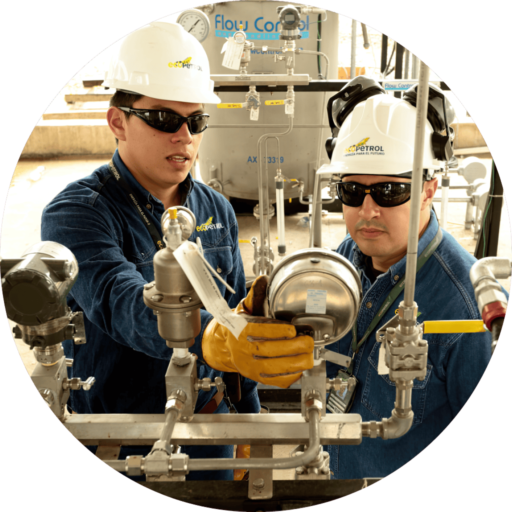
The implementation of teleworking was defined as of March 2022, within the framework of organizational needs, digital transformation, sustainable mobility, and human talent management, under the premises of worker loyalty, attraction, retention, and well-being, and in harmony with the productivity of the Company. The modality defined by Ecopetrol is referred to as Supplementary Teleworking, which allows workers to alternate their tasks between being in the Company and some other place on different days of the week using information technology.
The Company similarly offers another alternative referred to as flexible schedule, which also seeks to contribute to the work-life balance by allowing workers to opt for a schedule different than the usual, in accordance with the premises defined for each of the areas.
Variable compensation is a recognition granted by mere liberality by the Company for the results achieved, which is not guaranteed and will depend on the achievement of the defined goals.
Short-term variable compensation is paid annually based on business results (Grupo Ecopetrol TBG), considering discounts due to HSE events, ethical and disciplinary events, internal control aspects, and risks. It also considers the individual performance of workers. All workers are eligible for annual variable compensation, provided that they meet the eligibility conditions established in current regulations, and their payment is subject to the approval of the Board of Directors.
The variable compensation for results achieved 2022 is reviewed between January and April 2023, once the results for the year are available and the individual performance evaluation process for the term is closed.
| Variable compensation | Unit of measurement | 2022 |
|---|---|---|
| Number of employees eligible for variable compensation (period worked: 2021) | # | 9,472 |
| Percentage paid in 2022 | % | 103.6 |
(GRI 201-3) (WEF 18)
Ecopetrol, within the framework of the Human Talent planning process, continued to apply the Retirement Plan approved by the Company’s
Board of Directors to facilitate the dismissal, by mutual agreement, of personnel with more than 20 years of seniority and who met the other established requirements. This plan was designed and agreed with Unión Sindical Obrera within the framework of the 2018-2022 Collective Agreement. In 2022, 65 people took advantage of the Retirement Plan, adding up to a total of 580 workers who were dismissed under this modality between 2020 and 2022.
(GRI 201-3) (WEF 18)
By express mandate of Article 279 of Law 100 of 1993, Ecopetrol employees were exempt from being subject to the Comprehensive Social Security System contemplated therein.
Subsequently, Law 797 of 2003 included the employees who joined Ecopetrol from the entry into force thereof, that is, on January 29, 2003, in the General Pension System as mandatory affiliates; however, the exception contained in the aforementioned Article 279 of Law 100 of 1993 remained valid, pertaining to pensions of workers who had joined prior to that date.
The excepted pension regime expired on July 31, 2010, by virtue of the provisions of Legislative Act 01 of 2005, and therefore, as of August 1, 2010, all Company employees who did not acquire a pension right under Ecopetrol as of July 31 2010, are now covered under the General Pension System. Employees who received a retirement pension at Ecopetrol’s expense for having consolidated their right on July 31, 2010 continue to receive allowances and social benefits (health services for the employee and their registered family members), as well as educational benefits at the Company’s expense.
With respect to workers affiliated with the General Pension System, Ecopetrol makes the periodic contributions required by law. The respective pension administrators are now responsible for all the pension obligations. With regard the health and education benefits to which they are entitled, they are part of the labor liability payable by Ecopetrol.
In 2008, Ecopetrol partially commuted the allowances amount under its pension liability, transferring said obligations and the corresponding monies to autonomous pension funds (PAP, as per its Spanish acronym). The funds transferred, or their earnings, cannot change their destination or be repaid to the Company until all pension obligations have been met.
The commuted obligation covers the payment of allowances and pension bonds; health and education disbursements remain under the labor liabilities payable by Ecopetrol.
A total of 12,100 pensioners are under Ecopetrol’s responsibility, as of December 31, 2022, distributed as follows:
| Regional Unit | # of pensioners | % |
|---|---|---|
| Bogotá | 2,844 | 23.50% |
| Caribe | 1,196 | 9.88% |
| Central | 6,636 | 54.84% |
| Orinoquía | 86 | 0.71% |
| Sur | 1,338 | 11.06% |
| Total | 12,100 | 100% |
(GRI 401-1, 11-10-2) (WEF 17)
Ecopetrol uses People Analytics (PA) for its strategic workforce planning.
This allows the Company to be better prepared for the future and have greater capacity to face internal and external changes. Currently, PA is used to address different human resource management challenges, such as talent retention, improvements in the hiring processes, learning and professional development, larger diversity among employees, and greater productivity.
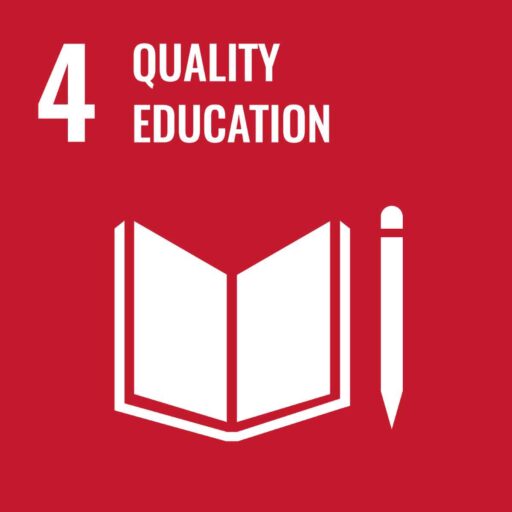
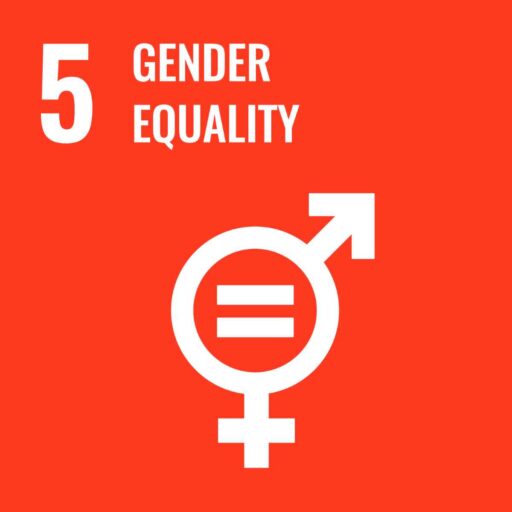
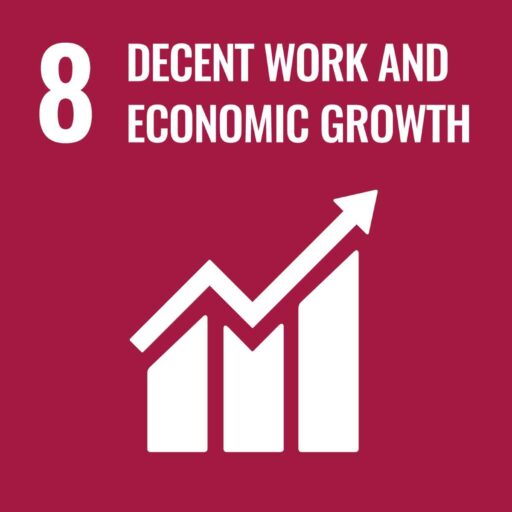
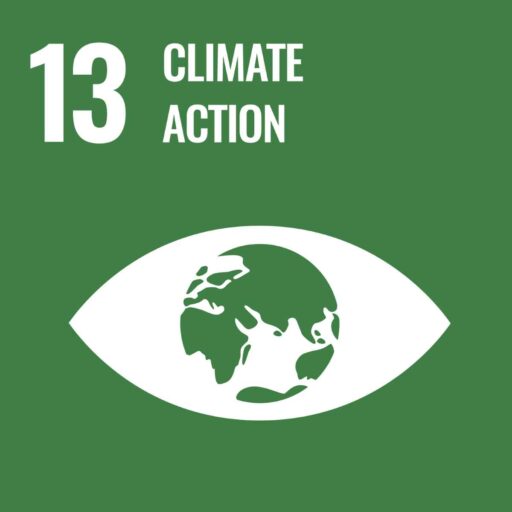
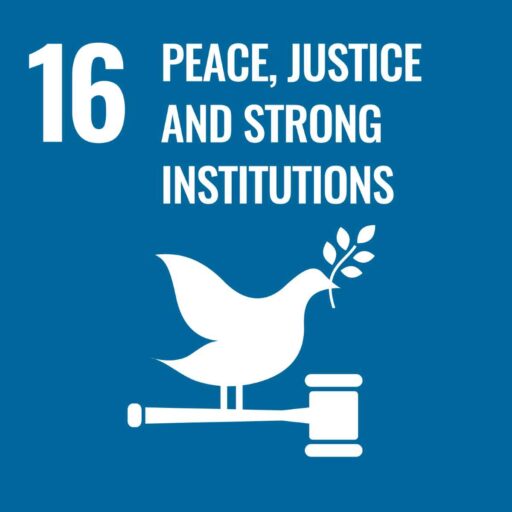
| Impacted Stakeholder Groups | Areas managing the impacts | Ecopetrol business line or segments generating the highest impact |
|---|---|---|
| Society and Communities | VTH | Upstream |
| Employees, pensioners, and their beneficiaries | VAB | Midstream |
| Downstream | ||
| Commercial | ||
| Low Emission Solutions |
Employees are Ecopetrol’s main asset. Due to the impact of talent management on the Company’s performance, on the proper growth of the Colombian economy, and due to the priority given to it by Stakeholder Groups, it is therefore a notable material element recognized in the 2040 Strategy: Energy that Transforms, under the Pillar of Cutting-edge Expertise, which guarantees TESG in the Ecopetrol Group on its path towards a just energy transition.
This material element ensures an optimal work environment, which in turn promotes learning and continuous training for the generation of skills.
Ecopetrol plays a fundamental role in preparing its different Stakeholder Groups towards a just energy transition “leaving no one behind.” Inadequate human talent management will have a negative impact not only on the achievement of corporate goals towards this transition, but also on people’s rights such as the right to work in decent conditions and the right to equality, inclusion, and non-discrimination, among others.
In the 2040 Strategy, the Ecopetrol Group set out to ensure that 70% of its workers develop cutting-edge expertise by 2030. This entails developing the necessary capacities to face the challenges for growth and TESG.
The goals defined in the attraction, development, and loyalty roadmap are monitored by the Vice Presidency of Human Talent using the business indicators in the Balanced Management Board (TBG), which included the indicator of Re-tooling with Cutting-edge Expertise and Capabilities.
As part of the process risk cycle established by Ecopetrol, the relevant controls have been identified and implemented, and are permanently monitored, as a mitigation measure against possible existing risks.
To leverage the 2040 Strategy, Ecopetrol strives for its talent to achieve exceptional performance with the following goals:
70% of workers retooled (Reskilling/Upskilling) by 2030.
Maintain favorability indexes at 90 in the Ecopetrol Group’s Cultural Transformation index by 2030.
95% of workers and leaders with the respective certificates ratifying the skills acquired to perform their roles by 2023.
Be the #1 company in Human Talent attraction, development, and loyalty according to external measurements by 2030.
40 points in employee experience in the NPS (Net Promote Score) by 2030.
Medium Term: 3 to 5 Years
Long Term: More than 5 Years
Efficiency monitoring has been conducted for the following indicators, and the main advancements are described below:
| Strategic options | Main achievements in managing material element roadmap | Advancements of each of the elements in 2022 |
|---|---|---|
| People Retooling (Continuous Learning and Development) and Upskilling with new capabilities (upskilling, reskilling) |
| Of the five skills defined, Ecopetrol was able to attain an installation rate of 98%, with a coverage of more than 6,213 people and completing more than 18,000 Cutting-edge Expertise learning actions.
Two (2) years were invested in the development of learning methods and skills through Genius, with more than 12,000 Ecopetrol Group employees transforming the potential to take on the new challenges of growth and TESG, producing +600 thousand contents in LXP Genius between videos, podcasts, readings, and others. More than 3,500 officials certified in law, industry, and internal regulations. The execution of the new Talent Planning process allowed the identification of the required future skills and an estimation of the necessary labor force, considering the current supply and future demand for talent. The 2022 scope included the business areas, and the 2023 scope will include the corporate areas and subsidiaries. The identified skills have allowed the University, together with the businesses, to build the 2023 Learning Plan, and the Labor Force estimate served as input to build Labor Expense scenarios. A tool was developed in-house to supports the Talent Planning process with dashboards for Skills, Workforce Projection, Workforce Gap Identification, and Action Plan Records. |
| Strengthening the Culture (People and Organization) | Implementation of the Cultural Appropriation Strategy: Progress Indicators: Progress was made in the closing of gaps for each Cultural Principle, with significant advancements in the Innovation Strategy, Ethical Tour, HSE Strategies, and Diversity and Inclusion. Continuous Measurement (Mirada al Espejo): A strategy was defined to continuously measure progress in the appropriation of the Declaration of Culture. The Mirada al Espejo measurement of Our Declaration of Culture will be taken every two years and pulses will be applied in the intermediate years to confirm the progress of appropriation. A pulse facilitated by Mercer was taken at the end of 2022, whose initial goal was to obtain 40% of responses for a statistical confidence of 95%; however, the goal was exceeded with a 72% participation rate, which demonstrates the Company’s interest in participating in the cultural transformation. Closing gaps in the results of Mirada al Espejo: it is worth noting that the question on Work and Life Balance increased significantly and that the levels of commitment remain very favorable. However, efforts must continue to improve communication from the leaders and to care for the health and emotional well-being of our collaborators. Culture Laboratories: Culture laboratories began to be implemented in digital projects in order to find the main adaptive challenges. Each of the projects has activities to close the main adaptive challenges. | Implementation of the Cultural Appropriation Strategy:
Advancement in the Pulse Progress was evinced in the following statements:
|
| Strategic options | Main achievements in managing material element roadmap | Advancements of each of the elements in 2022 |
|---|---|---|
| Employee Experience |
|
|
| Talent Management Analytics, Automation, and Digitization. |
|
|
| Indicators | Progress made by each of the indicators in 2022 | Goal |
|---|---|---|
| Human talent re-tooling with cutting-edge expertise and the necessary skills (RCC). | Installation of the skills required by human talent for the execution of the strategy with a 98% compliance rate. | 80% (2022) |
| NPS® Employees | 2022 Pulse: 79 – included only a sample of the population | 30 (2023) |
| Merco Personas (Merco Talento) | Ecopetrol ranked first in 2022 among the best companies to attract and retain talent in Colombia | First place by 2030 |
| Human Talent chapter on sustainability indicators: Dow Jones | Ecopetrol scored 75 out of 100, climbing seven (7) points compared to the 2021 measurement and to the variables of the Human Talent Vice Presidency; in 2022, the Company obtained the maximum score for the first time in five (5) more variables: Discrimination & Harassment, Workforce Breakdown: Race/ Ethnicity & Nationality, Employee Development Programs, Hiring, Employee Engagement Trend. | 70 points (2023) |
The implementation of lessons learned is reflected in the organizational changes and permanent reviews and improvements made on Ecopetrol processes. The cultural transformation has leveraged the creation of value between 2015 and 2022; and ultimately, the transformation of cutting-edge expertise will leverage the energy transition between 2023 and 2030, upon being incorporated into the 2040 Strategy: Energy that Transforms.
The material element of attracting, developing, and retaining talent mainly involves the Employees Stakeholder Group.
The identification of the skills required by each worker, as well as their required level, began in 2022. The learning actions were subsequently assigned according to the skill and compliance therewith was monitored. The commitment of each worker to their learning and the development of new skills is essential for the achievement of corporate goals in this regard.
(GRI 404-2, 11-10-7) (WEF 16)
The Ecopetrol Group defined Cutting-edge Expertise in its 2040 Strategy: “Energy that Transforms,” defining five (5) key skills for the materialization thereof. To this end, programs focused on the following scopes were established:
Create, develop, and manage low-emission businesses and projects that accelerate decarbonization and diversification. This seeks to ensure that the technical team acquires the necessary skills to meet the corporate objectives in the five (5) lines of work: circular economy, renewable energy, decarbonization, fuel quality, and energy efficiency. Among others, it will boost the development of circular thinking, the development of skills by structuring renewable energy business cases, the development of skills that favor the reduction of emissions, and the management of the greenhouse gas inventory, and the optimization of energy demand. More than 27,000 content pieces have been completed to date by the work team.
Seeks to develop digital skills to improve operating performance and enable the TESG and growth strategy, while preventing reprocessing by managing the support information. More than 28,000 content pieces have been completed to date.
Adjust work schemes, processes, and decision-making to respond quickly to market changes and generate greater value. More than 5,900 content pieces have been completed to date.
Generate improvements, create new alternatives and solutions, and develop products that leverage growth and TESG. More than 3,900 content pieces have been completed to date.
Take responsibility for the necessary activities to achieve the established results, supporting others in the construction of a common purpose. More than 500 actions have been completed to date.
(GRI 404-2, 11-10-7) (WEF 16)
The Master’s and PhD program Abroad offers opportunities for the Ecopetrol team to develop cutting-edge expertise in the best universities in the world.
68 scholarship holders have benefited from this program (period 2017-2022) in areas of study such as energy resources, environment, earth sciences, seismic modeling, and others.
The language program seeks to establish a level of functional language in the work environment with different strategies: virtual, customized online, immersion abroad. More than 3,000 workers have benefited from this program.
A team of 37 operators from the Barrancabermeja refinery obtained their professional degree in Refining and Petrochemical Process Engineering from Universidad Industrial de Santander (UIS). This program strengthened the ties between the academy and the industry, as well as professional growth, and improved the execution of processes.
As part of the initiative for the generational succession of operators structured by the Vice Presidency of Refining and Industrial Processes, 59 operators completed the FIBO Comprehensive Basic Operator Training Program. This program seeks to instill the Company’s Declaration of Culture in new workers, as well as the fundamental concepts of the operation and the industry, while promoting collective leadership, operating excellence, diversity and inclusion, and exceptional performance.
(ECP 008) (WEF 16)
The Company invested a total of 47,980,099,804 COP in 2022 for the training of its workforce.
(GRI 404-2, 11-10-6) (WEF 16)
| Average training hours per employee, by job category | Total number of training hours | Average training hours per employee |
|---|---|---|
| Senior management | 537 | 29.83 |
| Management | 8,258 | 67.14 |
| Middle management | 51,010 | 74.68 |
| Supervision | 56,602 | 135.74 |
| Professional technician | 481,568 | 76.90 |
| Operating | 213,813 | 107.28 |
| Total | 811,788 | 491.58 |
| Average training hours per employee, by gender | Total number of training hours | Average training hours per employee |
|---|---|---|
| Men | 655,331 | 92.72 |
| Women | 156,457 | 64.44 |
| Total | 811,788 | 157.16 |
| Training in human rights policies | Unit of measurement | 2022 |
|---|---|---|
| Total number of hours dedicated | # | 5,673 |
| Number of employees receiving training | # | 2,107 |
| Percentage of employees receiving training | % | 22.19 |
In 2022, 7,198 employees received training in climate change and energy transition through the following programs:
Energy Transition Program in partnership with Instituto Francés del Petróleo (IFP), aimed at learning about the global challenges to mitigate climate change and better understanding the lines of action defined to achieve Ecopetrol’s decarbonization goals. The IFP School is an entity associated with the energy industry in terms of innovation and sustainable development.
Programs were designed and executed in partnership with Waste2worth concerning the financial model of circular projects, life cycle analysis, and circular indicators.
Contents on fuel quality, decarbonization, circular economy, energy efficiency, energy transition, and climate change were developed, with more than 31,000 actions deployed by 7,198 workers during 2022.
| Unit of measurement | 2022 | |
|---|---|---|
| Average training and development hours by FTE | Hours | 85,487 |
| Average investment in training and development by FTE | COP | 5,061,192 |
Ecopetrol changed the periodicity of the “Mírate al Espejo” Cultural Transformation Index. This currently takes place every two (2) years to be able to act on the results of the survey. However, the Company has implemented a listening strategy to continually survey employees on specific growth opportunities.
In 2022, Ecopetrol conducted a workforce pulse (survey) to obtain feedback on levels of commitment, and the result remains “highly favorable” compared to the benchmark. This shows that the employees of the Ecopetrol Group are very much committed to the Company (96%).
| Commitment | Unit of measurement | 2019 | 2020 | 2021 | 2022 |
|---|---|---|---|---|---|
| Workforce commitment | % | 65.3 | 96 | 96 | 96* |
| Percentage of data coverage | % | 91.6 | 82 | 92 | 92 |
* 2022 employee commitment target: 96%
For more actions and results associated with the appropriation of culture, click here.
El Grupo Ecopetrol está comprometido con dar valor a la diversidad, acoger las diferencias e impulsar el desarrollo de entornos cada vez más incluyentes, donde todas las personas se sientan bienvenidas, apreciadas, tratadas con equidad y respeto, y en los que reciban igualdad de oportunidades para que puedan aportar lo mejor de sí mismos.
The Ecopetrol Group is committed to highlighting the importance
of diversity, embracing differences, and promoting the development of increasingly inclusive environments, where all people feel welcome, appreciated, treated fairly and with respect, and in which they have access to equal opportunities so that they contribute the best of themselves.
In terms of human talent, the Company adopts labor practices aligned with this framework, applicable to the Board of Directors, senior management, and all people working at the Ecopetrol Group. In this sense, it is worth highlighting the Diversity and Inclusion Program (DEI), which is based on the principles of meritocracy, equity, and justice. Below are some advancements and achievements:
1
2
Talent diversity is thriving: in four (4) years, the participation of women in leadership positions has increased by 12.5 percentage points, from 18% to 30% in 2022 in Ecopetrol, and 24% to 31% in the Ecopetrol Group.
3
The plant employs more than 566 people with disabilities (6%), predominantly physical disabilities accounting for 80%, followed by 9% with mental challenges.
4
Ethnic self-identification and other social and cultural conditions are monitored every two years by means of the Culture survey, which was conducted in 2021. 7% of the population identifies itself as an ethnic minority (Afro-descendant, Indigenous, Black, others). The cultural pulse was conducted in 2022 (69% coverage) whose results showed that 5% identified themselves as an ethnic minority.
5
The number of Ecopetrol employees with same-sex partners grew from 9 to 27.
To learn more about the composition of the labor force, click this link.
Ecopetrol made progress in the objectives of providing a more inclusive experience for all Stakeholder Groups and achieving high standards of diversity, equity, and inclusion:
Inclusive Company Seal: Ecopetrol was awarded the highest inclusion recognition by ANDI, USAID Colombia’s Program of Alliances for Reconciliation, ACDI/VOCA Colombia and Deloitte.
Equipares Silver Seal: Ecopetrol is bestowed the Equipares Silver Seal (System for Gender Equality) with a rating of 98.47%. Ten (10) Group companies have already adopted processes in favor of gender equality.
Global Diversity, Equity, and Inclusion Benchmark (GDEIB): in the maturity verification of the GDEIB standard, Ecopetrol was rated 4.0/5.0 (progressive level) by expert panelists authorized by the Center for Global Inclusion.
Friendly Biz Corporate Seal: Ecopetrol obtained this seal awarded by the Colombian LGBT Chamber of Merchants, and audited by Future Builder, to companies committed to the respect and inclusion of the LGBT+ community.
Club del 30%: Ecopetrol adheres to the initiative that promotes greater participation of women in boards of directors.
Valuable 500: global alliance of the 500 most influential companies driving the disability agenda.
The following indicators are monitored to ensure that the Company is fulfilling its promise of being a diverse and inclusive workspace:
(GRI 405-1, 11-11-5) (WEF 2, 11)
| Employees by job category | Men | Women | Total |
|---|---|---|---|
| Senior management | 14 | 4 | 18 |
| Management | 89 | 34 | 123 |
| Middle management | 473 | 210 | 683 |
| Supervision | 410 | 7 | 417 |
| Professional technicians | 4,239 | 2,023 | 6,262 |
| Operating | 1,843 | 150 | 1,993 |
| Percentage of senior management | 77.778% | 22.222% | 100% |
| Percentage of management personnel | 72.358% | 27.642% | 100% |
| Percentage of middle management | 69.253% | 30.747% | 100% |
| Percentage of supervision personnel | 98.321% | 1.679% | 100% |
| Percentage of professional technicians | 67.694% | 32.306% | 100% |
| Percentage of operating personnel | 92.474% | 7.526% | 100% |
(GRI 405-1, 11.11.5) (WEF 2, 11)
| Employees by job category | Under 30 years | Between 30 and 50 years | Over 50 years | Total |
|---|---|---|---|---|
| Senior management | 0 | 6 | 12 | 18 |
| Management | 0 | 69 | 54 | 123 |
| Middle management | 0 | 491 | 192 | 683 |
| Supervision | 0 | 248 | 169 | 417 |
| Professional technicians | 365 | 4,620 | 1,277 | 6,262 |
| Operating | 109 | 1,269 | 615 | 1,993 |
| Percentage of senior management | 0% | 33.333% | 66.667% | 100% |
| Percentage of management personnel | 0% | 56.098% | 43.902% | 100% |
| Percentage of middle management | 0% | 71.889% | 28.111% | 100% |
| Percentage of supervision personnel | 0% | 59.472% | 40.528% | 100% |
| Percentage of professional technicians | 5.829% | 73.778% | 20.393% | 100% |
| Percentage of operating personnel | 5.469% | 63.673% | 30.858% | 100% |
(GRI 405-1, 11.11.5) (WEF 2, 11)
| Employees by job category | Ethnic minority | People with disabilities | LGBTQI+ | Total |
|---|---|---|---|---|
| Senior management | 1 | 0 | 0 | 1 |
| Management | 0 | 0 | 0 | 0 |
| Middle management | 7 | 11 | 0 | 18 |
| Supervision | 0 | 55 | 3 | 58 |
| Professional technicians | 219 | 211 | 20 | 450 |
| Operating | 104 | 289 | 4 | 397 |
| Percentage of senior management | 0% | 0% | 0% | 100% |
| Percentage of management personnel | 0% | 0% | 0% | 0% |
| Percentage of middle management | 38.889% | 61.111% | 0% | 100% |
| Percentage of supervision personnel | 0% | 94.828% | 5.172% | 100% |
| Percentage of professional technicians | 48.667% | 46.889% | 4.444% | 100% |
| Percentage of operating personnel | 26.196% | 72.796% | 1.088% | 100% |
(GRI 2-27, 405-1, 11.11.5) (WEF 2, 11, 17)
| Diversity indicator | % of FTEs | Is the indicator public? | Coverage |
|---|---|---|---|
| People with disabilities | 6 | Sí | >75% of FTEs |
| LGBTQI+ | 0.3 | Sí | <25% of FTEs |
| <30 years | 5 | Sí | >75% of FTEs |
| 30-50 years | 71 | Sí | >75% of FTEs |
| >50 years | 24 | Sí | >75% of FTEs |
| Others –> Inclusive education plan | 3 | Sí | >75% of FTEs |
(GRI 405-2, 11.11.6) (WEF 11)
| Diversity indicator | Percentage (0 – 100%) | Public target | Target year |
|---|---|---|---|
| Percentage of women in the total workforce (as a % of total staff) | 26% | 0% | 0 |
| Percentage of women in all managerial positions, including junior, middle, and senior managers (as a % of total managerial positions) | 30% | 0% | 0 |
| Percentage of women in junior or entry-level management positions (as a % of all junior management positions) | 31% | 0% | 0 |
| Percentage of women in senior management positions, i.e., at most two levels from CEO or comparable positions (as a % of total senior management positions) | 27% | 0% | 0 |
| Proportion of women in leadership positions in revenue-generating roles (such as sales), as a % of all managers of this type (i.e., excluding support roles such as HR, IT, Legal, etc.) | 23% | 0% | 0 |
| Proportion of women in leadership positions in revenue-generating roles (such as sales), as a % of all managers of this type (i.e., excluding support roles such as HR, IT, Legal, etc.) | 19% | 0% | 0 |
(GRI 405-2, 11.11.6) (WEF 12, 19E)
| Salary ratio | Female average salary | Male average salary | Proportion |
|---|---|---|---|
| Executive level (base salary only) | 848,214,624 | 1,043,013,039 | 0.81 |
| Executive level (base salary + other cash incentives) | 1,060,268,280 | 1,364,897,915 | 0.78 |
| Management level (base salary only) | 383,543,784 | 412,416,477 | 0.93 |
| Management level (base salary + other cash incentives) | 444,832,228 | 482,289,854 | 0.92 |
| Non-administrative level | 213,812,577 | 198,654,590 | 1.08 |
The average wage difference in 2022 between men and women was 2.1% (salary segregation*).
The salary segregation index is designed to monitor the salary differences between population groups. Both men and women are used for the current base.
Whenever the index = o, there is no salary gap, i.e., the closer it is to zero, then there is an equitable salary distribution, regardless of gender or sex.
| SALARY SEGREGATION INDEXES | 2019 | 2020 | 2021 | 2022 |
|---|---|---|---|---|
| 2.24 | 2.18 | 2.94 | 2.10 |
To analyze the level of the position, the result is interpreted as follows:
| Salary segregation in favor of women | + ←—→ – | Salary segregation in favor of men |
|---|---|---|
| 0 |
*Equipares Methodology
(GRI 405-2, 11-11-6) (WEF 12, 19E)
| Breakdown | Percentage of total labor (as a % of total labor) | Percentage in all managerial positions, including junior, middle, and senior managers (as a % of total managerial workforce) |
|---|---|---|
| Afro-descendant | 2.12% | 1.3% |
| White | 31.8% | 42% |
| Native | 0.5% | 0.3% |
| Mestizo | 62.9% | 55.4% |
| Black | 1.1% | 0.7% |
| Other ethnicities | 1.6% | 0.3% |
To learn more about the Diversity and Inclusion Program, click on the following link.
The Well-being Plan promotes the balance between work and personal life and good physical and emotional health for collaborators to develop their full potential and contribute to the sustained growth of the Company’s strategy. This plan consists of three (3) interrelated pillars: Have fun / Share / Take care of yourself
Ecopetrol implements mechanisms that facilitate the assignment of its workers to other Group companies and external entities, as well as transferring them to different regions in the country within the company, under the principles of equity and ensuring competitive conditions.
Internal mobility at Ecopetrol can take place permanently in a new workplace, or temporarily by ensuring the worker’s the return to his/her original workplace.
A total of 384 people were transferred in 2022: 296 (77%) to new permanent workplaces and 88 (23%) were temporary transfers. The total number of workers transferred was 358, given that a worker may be transferred more than once during the year. Below is a breakdown of this population:
| MEN: | WOMEN: : | ||
|---|---|---|---|
| 273 (76%) | 85 (24%) |
External mobility at Ecopetrol applies when a leadership, tactical, or operating position/role needs to be covered in one of the Group Companies due to organizational needs or because of a collaboration agreement entered into with state entities. This process can take place with or without suspending the employment contract. At the level of State entities, it is always without suspending the contract.
As of December 31, 2022, there were a total of 245 ongoing processes for external mobility assignments; a total of 239 (98%) cases with suspended contracts and 6 (2%) with active contracts. 99% of the processes correspond to assignments to companies within the Ecopetrol Group and 1% to different external entities. The gender classification is as follows:
| MEN: | WOMEN: | ||
|---|---|---|---|
| 221 (90%) | 24 (10%) |

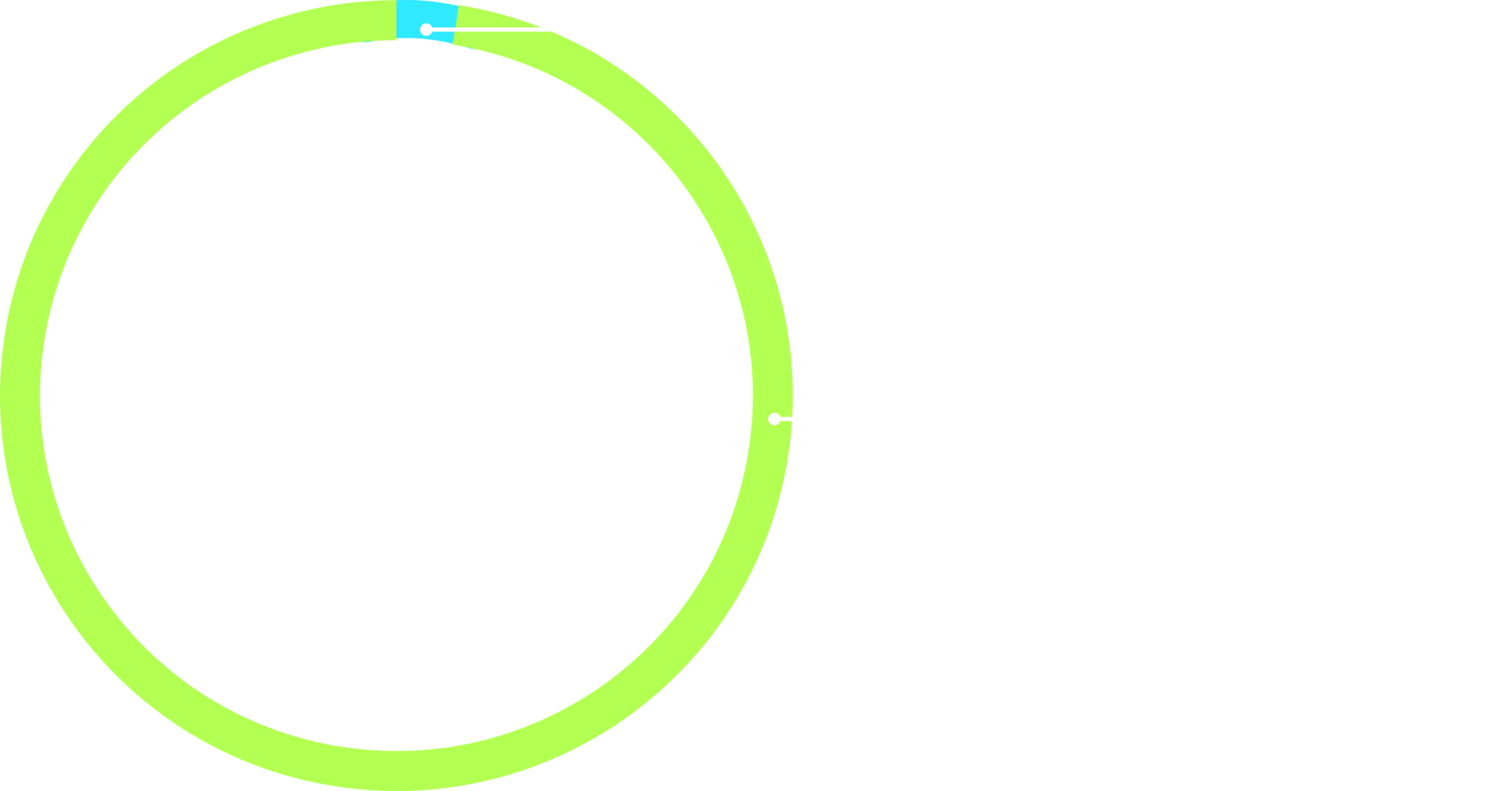
(GRI 404-3) [sfc src=”7.4.1. 3.1.VII”]
| Performance evaluation and professional development | Men | Women | Total percentage of employees |
|---|---|---|---|
| Senior management | 0.16% | 0.04% | 0.2% |
| Management | 0.95% | 0.37% | 1.32% |
| Middle management | 1.74% | 0.98% | 2.72% |
| Supervision | 3.32% | 1.28% | 4.6% |
| Professional technicians | 49.08% | 21.08% | 70.16% |
| Operating | 19.43% | 1.57% | 21% |
| Total | 74.68% | 25.32% | 100% |
Note. This table lists the percentage of Ecopetrol’s direct employees by position level and gender. The performance evaluation model applies to 100% of direct collaborators, with 9,122 collaborators evaluated by the end of the year.
| Performance evaluation type | % of employees |
|---|---|
| Performance by objectives: systematic use of agreed and measurable goals | 100% |
| Multidimensional performance evaluation (180°) | 18.62% |
| Comparative ranking between employees in the same job category | 100% |
The decrease recorded in the 360° evaluation in 2022, with respect to the previous period, was due to the prioritization of the retooling strategy in the Company. For 2023, the plan is to apply the 360° evaluation again to 100% of the population of eligible leaders.
Leaders and succession candidates are continually appraised at Ecopetrol, in order to define development plans to prepare them in advance. This is a cyclical process and one that is reviewed each year to include new critical leadership positions and new candidates as potential successors. This is one of the key resources in the Company to guarantee that leadership positions are filled accordingly.
By year end in 2022, 398 critical leadership positions subject to succession were defined for Ecopetrol: 22 corresponding to senior management levels, 124 to management levels, 158 to heads of department, 55 to coordinators, and 39 to other leaders. To this end, the Company has a total of 1,283 succession candidates, 467 women (36%) and 816 men (64%). The results of the process are consolidated at the end of 2022 into 26 talent maps encompassing all companies under the Ecopetrol Group. The Group’s cross-cutting committees were established for a comprehensive view of the human talent in the Company by role (for example: supply, audit, legal, compliance).
Set of learning experiences to develop and strengthen leadership skills and the management of leaders and successors in the Company, consisting of:

Formal training
Apprenticeship courses
with partner institutions.

Learning through third parties
Coaching and mentoring.
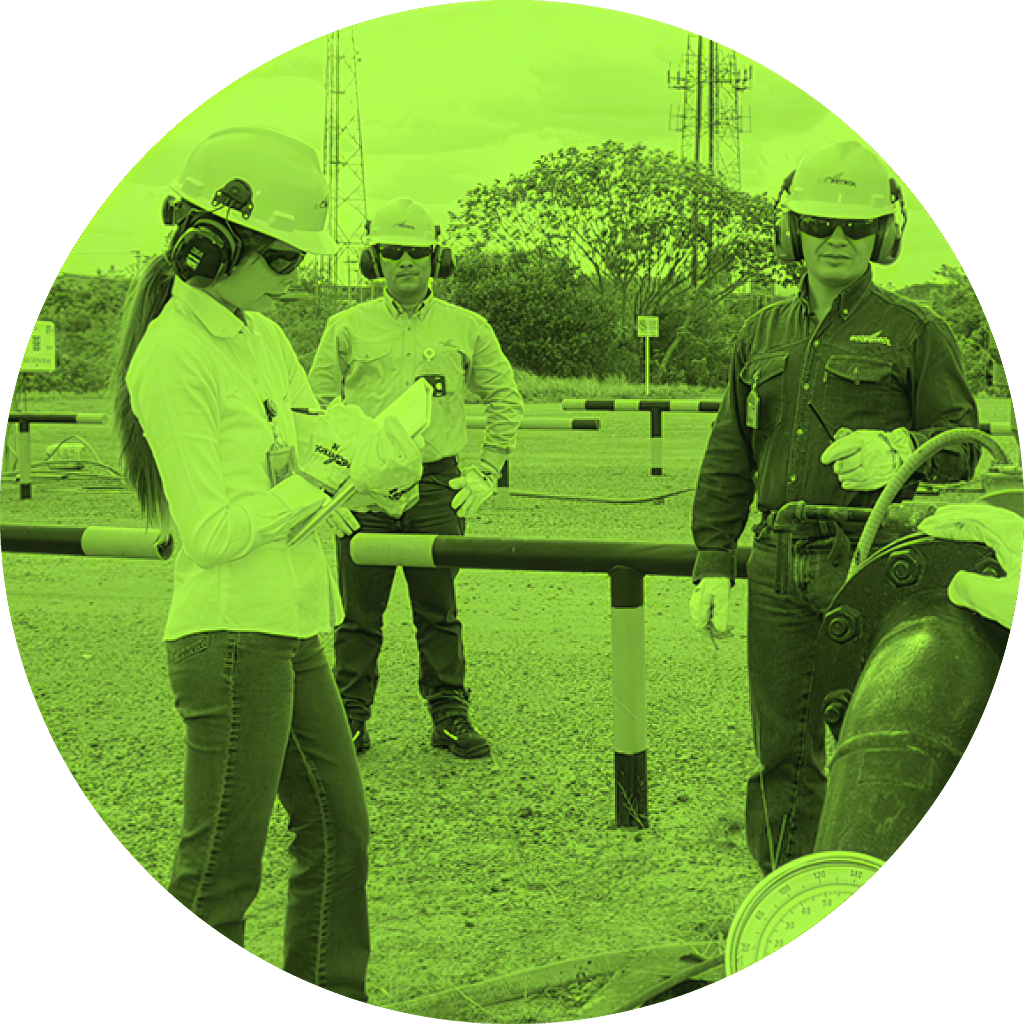
Exposure and practice
Assignment to different roles.

Leadership certification
Which requires the fulfillment of requirements associated with expertise, implementation, and results, allowing the organization’s leaders to be certified in one of the four (4) defined levels (bronze, silver, gold, and diamond).
(ECP 009) (SFC 7.4.1.3.1. VII)
This is a development tool based on the measurement of the leadership skills of the person appraised throughout their different networks of engagement (boss, collaborators, peers, and clients) in order to have a broad understanding and perspective of their role as leaders. This tool can be used to measure the evolution in the development of skills of the persons who have already been previously evaluated, and also to determine the current level of development of those who are just being included in the evaluation group.
This measurement has been refined over four (4) editions at Ecopetrol, which has allowed us to see the evolution of the valued skill set. A scale of four (4) levels of development has been defined: (1) leader with potential failure, (2) leader in development , (3) competent leader, and (4) extraordinary leader; in this way, the leaders appraised under the methodology are classified into one of these levels to define the corresponding support plan in their development process.
The strategy of assessing these competencies has been progressively applied to different levels of leadership throughout the various editions, beginning with vice presidents and expanding coverage to managers and subsequently to heads of department and coordinators. Ecopetrol has increased its level of development in the competent leader category from 66% in 2018 to 97% in 2021. The overall result of the last measurement taken in 2021 stood at 4.32/5.
| New hires by age | Number of new hires (#) | New hire rate (index) |
|---|---|---|
| Under 30 years | 157 | 29.02 |
| Between 30 and 50 years | 362 | 66.913 |
| Over 50 years | 22 | 4.067 |
| Total | 541 | 100 |
| New hires by gender | Number of new hires (#) | New hire rate (index) |
|---|---|---|
| Women | 186 | 34.381 |
| Men | 355 | 65.619 |
| Total | 541 | 100 |
(GRI 401-1, 11-10-2) (WEF 17)
| New hires by region | Number of new hires (#) | New hire rate (index) |
|---|---|---|
| Central | 165 | 30.499 |
| Bogotá | 265 | 48.983 |
| Caribe | 37 | 6.839 |
| Orinoquía | 32 | 5.915 |
| Sur | 10 | 1.848 |
| Oriente | 32 | 5.915 |
| Total | 541 | 99.999 |
| % of internal recruitment | Unit of measurement | 2019 | 2020 | 2021 | 2022 |
|---|---|---|---|---|---|
| Total number of hires | # | 603 | 96 | 96 | 96* |
| % of vacancies filled with internal candidates | % | 91.6 | 82 | 92 | 92 |
| Average Cost of Hiring/FTE | COP | 2,652,848 | 3,423,808 | 2,149,533 | 3,040,838 |
In developing the diversity and inclusion policy and objectives, several affirmative measures were implemented to increase the participation of underrepresented groups in the Company:
1
Development and training of the selection team and people in leadership positions involved in the inclusive recruitment and selection process. This training seeks to strengthen workers’ diversity, equity, and inclusion skills. Some of the topics included are: how to conduct inclusive recruitment, guidelines to mitigate the effect of unconscious biases in the selection process, guidelines for conducting interviews without biases and considering differential treatment, business diversity objectives, among others.
2
Strategic diversity objectives were also established for all Ecopetrol positions: A more diverse talent: ensuring a 40-70% participation rate of underrepresented groups or that face more barriers to labor inclusion in the selection process by 2030.
3
An affirmative measure applies in the case of leadership vacancies, which requires the participation of at least one female candidate in the processes that are opened. This measure has allowed Ecopetrol to break the glass ceiling in 2022, with a 30% participation of women in these positions (considering that it was 18% when it was first implemented in 2018).
Ecopetrol adopts business practices to employ local people at the operating sites for at least 80% of the sites owned or operated by the Company.
In compliance with Decree 1668/16, pertaining to local labor, the announcements referred to in said regulation were published on the Public Employment Service’s webpage. Click here for more information on the recruitment process.
The skills assessment defines the focus of resources in terms of training, and it is therefore essential for it to be conducted under the principles of validity, objectivity, confidentiality, and integrity. Usually, the process is led by experts/technical references and leaders within the organization, and it can be done using one of the following mechanisms available: Implementation of instruments/technical assessment interviews, certifications by an accredited entity, evaluation of the learning cycle, compliance with the training curriculum and/or development plan, endorsement by a technical expert or leader, and the selection process. The validity of the assessment results ranges from one (1) to five (5) years maximum, depending on the mechanism used, provided that there are no significant changes in the skills associated with the profile of the evaluated collaborator. Currently, the appraisals of 95% of the petrotechnical population and 65% of the general population continue to be valid.
(GRI 401-1, 11-10-2) (WEF 17)
| Hires | Dismissals | Beginning of 2022 | End of 2022 | Staff turnover rate | |
|---|---|---|---|---|---|
| Total Turnover Rate | |||||
| 533 | 365 | 9,322 | 9,496 | 4.77 | |
| Turnover Rate by Management Level | |||||
| Senior management (extended Steering Committee – President, Vice Presidents, and Managers who are on the extended committee) | 0 | 1 | 26 | 24 | 2 |
| Management (all other Managers) | 3 | 16 | 125 | 117 | 7.85 |
| Middle management (Heads of Department, Coordinators, and A, B, C, and D leaders) | 20 | 32 | 614 | 681 | 4.01 |
| Supervision (Supervisors) | 0 | 11 | 477 | 484 | 1.14 |
| Professional technician (map of professional technical positions) | 410 | 223 | 6,078 | 6,197 | 5.16 |
| Operating (map of operating positions) | 100 | 82 | 2,002 | 1,993 | 4.55 |
| Turnover rate by age | |||||
| Under 30 years | 153 | 77 | 415 | 476 | 25.81 |
| Between 30 and 50 years | 359 | 128 | 6,418 | 6,434 | 3.79 |
| Over 50 years | 21 | 160 | 2,489 | 2,586 | 3.57 |
| Turnover rate by gender | |||||
| Women | 183 | 115 | 2,350 | 2,428 | 6.24 |
| Men | 350 | 250 | 6,972 | 7,068 | 4.27 |
| Voluntary turnover rate | |||||
| 533 | 104 | 9,322 | 9,496 | 3.38 | |
| Turnover rate by region in Colombia | |||||
| Bogotá | 255 | 166 | 3,246 | 3,351 | 6.38 |
| Caribe | 37 | 22 | 1,099 | 1,115 | 2.66 |
| Central | 167 | 138 | 3,371 | 3,390 | 4.51 |
| Oriente | 32 | 3 | 304 | 334 | 5.48 |
| Orinoquía | 32 | 25 | 919 | 933 | 3.08 |
| Sur | 10 | 11 | 383 | 373 | 2.78 |
(ECP 009, 010) (ECP 404-2, 11-10-7) (ECP 16)
New Generations Program: investing in the growth of new generations of talent is part of the “retooling” required at Ecopetrol to anticipate future challenges.
Seedbeds: seeks to promote the development of seed talent as drivers of change and cultural transformation to energize the Ecopetrol talent, strengthen the advancement of current projects, and ensure a generational relay.
The New Generations and Seedbeds programs covered 694 hours of training, with the participation of 207 Ecopetrol workers.
High Potentials: seeks to accelerate the comprehensive evolution of professionals with high growth potential in order to strengthen the leadership, strategic thinking, and management skills required in the Company’s new context of transformation and challenges. It is a competitive advantage since it consolidates the foundations for the next generation of talent at Ecopetrol and retains the most talented professionals.
(ECP 009, 010) (ECP 404-2, 11-10-7) (ECP 16)
Ecopetrol’s internal regulations ensure respect for the rights of workers, such as the constitutional right to freedom of association and freedom of union. As proof thereof, there are currently 28 coexisting union organizations in the Company, of which 19 are industry unions and nine (9) are company unions, according to the classification of the Law (Article 356 of the Substantive Labor Code).
(ECP 407-1, 11-13-2) (WEF 21E)
Ecopetrol is committed to respecting the right to freedom of association and collective bargaining, in accordance with the highest international human rights standards. Similarly, the Company respects and promotes fundamental labor rights.
In 2022, Ecopetrol continued with a work scheme with the coexisting union organizations in the Company, through harmonious and constructive labor relations based on direct communication schemes. The union relationship scheme, which is based on the recognition and respect of rights and duties, was strengthened with the purpose of leveraging the construction of healthy relationships, in favor of the Company’s growth and the well-being of the entire Ecopetrol work team. Ecopetrol adheres to the commitments consented with union organizations and established in the Collective Labor Agreement (CCT) and other agreements, both with the Boards of Directors and with the Sub-directorates of these coexisting organizations in the Company, and in compliance with current regulations.
Ecopetrol, respectful of the exercise of union work, generates the union permits required by the USO and fully complies with the granting of the economic requirements, aid, travel expenses, air tickets, security schemes, and other guarantees set forth in the applicable conventional and legal framework.
The validity of the current CCT agreed in the last negotiation in 2018 expired on December 31, 2022. This Convention establishes the working conditions and benefits applicable to Company workers under this collective agreement during its term.
The CCT will be subject to a new negotiation process in 2023, if the conditions provided for by Law are met; that is, the manifestation of interest by the signatories to modify its content and the submission of petitions by the unions. An eventual negotiation process of the CCT is part of the provisions set forth under Colombian legal regulations and it constitutes a normal stage in the consolidation of labor relations and interaction with union organizations, in which the Company will seek to promote a constructive dialogue to reach agreements, without causing any impacts on operations.
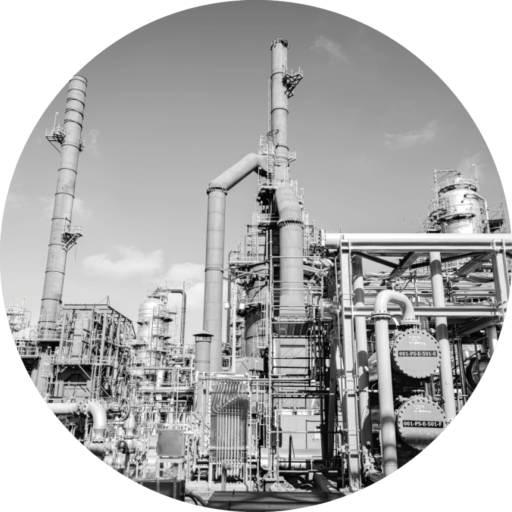
(GRI 2-30) (WEF 21E)
78% of Employees are Covered under Collective Bargaining Agreements.
There are 2 salary schemes at Ecopetrol: Collective Labor Agreement and Agreement 01 of 1977. This Agreement is an administrative act issued by the Board of Directors, in accordance with its legal and statutory powers. It is not a collective agreement (it does not arise from a negotiation process between the Company and non-unionized workers) and it determines the salary and benefits structure for managerial, technical, and dependable personnel who voluntarily adhere to it or who are subject to it by exclusionary clause.
The aforementioned salary and benefits schemes are exclusive and must be applied in a comprehensive manner, regardless of the method adopted or applicable to the worker, by virtue of the principle of inseparability, to the extent that one and the other enshrine different prerogatives. The 2018-2022 Collective Labor Agreement recognizes the classification of managerial, technical, and dependable workers and the coexistence of the salary and benefits scheme contained in Agreement 01 of 1977.
The health provisions of the Collective Bargaining Agreement are laid out in Chapter VI “Medical Services,” as follows: Ecopetrol, by virtue of the provisions under Article 279 of Law 100 of 1993, is exempt from the General System of Social Security in Health (SGSSS) and, therefore, its duly registered workers, pensioners, and family members are governed by the system of social security in health established in the CCT Ecopetrol – USO.
The Company provides the following medical services to the recipients of the health service: general medicine outpatient consultation, specialized consultation and second concepts, alternative medicine and complementary therapies, priority care, program for highly dependent chronic patients, home care and hospital-at-home, paramedics, dentistry, occupational health, among others. The general considerations under the Health Plan include the supply of medicines, 100% coverage of rehabilitation treatments for family members, emergency services nationwide in places other than the location of the medical services, referrals for diagnosis, and treatment when there are no services available at the location, among others. It also establishes the conditions for the provision of medical services for waived diseases for permanent and fixed-term contract workers, such as the determination of labor protection timeframes for workers.
There is no defined minimum number of weeks to report significant operating changes in human talent issues that could affect workers. However, whenever these situations are to arise, they are communicated to the workers in advance in the communications strategy designed for this purpose and also through the area managers. In the same way, permanent dialogue spaces are organized with the most representative trade union organizations to inform the changes and the corresponding business strategy. This, in order to guarantee respect for the rights of workers and union organizations.

| Impacted stakeholder groups | Areas that manage the impacts | Ecopetrol business line or segments generating the highest impact |
|---|---|---|
| Suppliers | HSE Vice Presidency | Upstream |
| Society and Communities | Midstream | |
| Employees | Downstream | |
| Commercial | ||
| Low emission solutions |
Occupational health is a notable material element that generates value for the Ecopetrol Group by promoting healthy work environments, with healthy and productive work teams, preventing impacts on communities, contributing to the efficiency of processes, and preserving the Company’s reputation.
(GRI 3-3-b, 403-2, 403-9, 11-9-10) (WEF 15)
The activities undertaken in the hydrocarbon sector are considered of substantial risk.
The activities or processes that could suddenly release energy and cause serious injury are identified during the risk assessments. Some of the hazards that can cause these events include working at height, intervening electrical systems, driving vehicles, entering confined spaces, mechanical lifting of loads, operating pressure systems, among others. For this type of activity, Ecopetrol has adopted safe practices that define the responsibilities, skills, and control measures to be followed in these situations. These potential hazards and their corresponding controls make up the Rules that Save Lives, which is a communication and internalization mechanism for workers. The first principle of control is: if it is not feasible, don’t do it, or do it in another way that eliminates the risk.
Within the framework of Decree 2090 of 2003 “Which defines the high-risk activities for the health of workers and modifies and sets the conditions, requirements, and benefits in the pension system of the workers who operate in said fields” and Decree 2655 of 2014, the Ecopetrol units that undertake high-risk activities, and which are therefore subject to the aforementioned standards are described below:
1
Work involving exposure to high temperatures, above permissible limits, determined by the technical standards of occupational health:
2
Work with exposure to proven carcinogenic substances:
3
In the Fire Departments, the activity related to the specific task of acting in firefighting operations:

With regard to the incidence of occupational diseases at Ecopetrol, no events associated with the activities referred to above were reported in 2022.
Occupational health at Ecopetrol allows for the early and proactive management of occupational risks, in order to promote, maintain, and improve the physical, mental, and social health of workers; contribute to the prevention of occupational diseases through a set of interdisciplinary activities for the identification and management of hazards and risks in the work environments, both in the current operation of the assets and in the design phases of new projects, and in the work activities performed while teleworking, or others defined by Ecopetrol. The foregoing, to avoid negative impacts on the work teams, communities, and suppliers, which may affect, among others, their rights to physical and mental health and to working in decent conditions.
The cultural principle of “Life First” guides Ecopetrol’s HSE efforts since it establishes the Company’s commitment to the preservation of life in its different manifestations. This is why permanent care is exerted for the individual, the people around them, and the planet. These results are translated into the following behaviors:
We take care of ourselves and take care of others .
We act with rigor and discipline with regard to the HSE management system.
The Company’s commitment to the principle of “Life First” is reflected in the 2040 Strategy “Energy that Transforms”. Also, the Ecopetrol Comprehensive Policy mentions that “the commitment to life, environmental protection, and the prevention of injuries and illnesses are present in all our activities. Accordingly, we make our best efforts to protect the lives of people and the environment, implementing appropriate safety and health standards at work, while protecting the environment and ensuring the sustainability of the operations.”
In this sense, Ecopetrol has a public commitment to health and safety at work, which includes the following elements:
Compliance with relevant international health and safety standards and regulations at work, as well as voluntary programs, and/or health and safety collective agreements at work.
Applicable to all Company operations/employees, as well as contractors or individuals under the supervision of the Company.
Committed to continuously improve the performance of the occupational health and safety management system.
Establishment of priorities and action plans.
Setting quantitative targets to improve OHS performance metrics.
Support for the adoption of the OHS policy.
Consultation and participation of workers and, if available, of worker representatives.
The highest-ranking decision-making body in these matters is the Steering Committee.
The HSE Vice Presidency manages the potential hazards and risks in the work environments as follows:
Curing work environments with high occupational health standards and developing strategies to anticipate risk management from the initial stages of the projects, as well as risk management in existing facilities.
Promoting healthy lifestyles and preventing the occurrence of occupational diseases by:

The effectiveness of the occupational health strategy is evaluated as follows:
Intervention of work environments: compliance with intervention plans (HRA-Hygiene-Ergonomics-Psychosocial) and risk level control of critical trades.
Occupational risk management in projects: intervention of psychosocial aspects, management of ergonomic risks, industrial hygiene, and occupational risks in the new normal.
Preventive and occupational medicine: periodic comprehensive health evaluations, occupational disease, and occupational risk management during the COVID-19 health emergency.
Innovation and Technology: data analytics to predict and alert possible risks in occupational health.
The Department of Occupational Health is responsible for monitoring and reporting on the compliance and impact of the tactical and operating plans. The lines of action are divided into intervention plans for safe, healthy, and sustainable operations, including HRA plans, industrial hygiene plans, ergonomics plans, psychosocial plans, and intervention plans for healthy workers with quality of life, such as the preventive medicine and work program, the occupational health promotion and prevention program, and the occupational epidemiological surveillance program. Monitoring is conducted based on the information contained in internal tools:
www.ecosaludocupacional.com, www.ecohigieneindustrial.com and Power BI created for the permanent monitoring of management efforts.
The effectiveness of the occupational health strategy is evaluated as follows:
Long term:
New international quality facilities in petrochemical processes and new processes (alternative energy generation)
Short term:
Medium term:
Long term:
Opportunities for innovation, technological updating, and application of data analytics
Short term:
Medium term:
Long term:
Mitigating the risks to the health of workers and the community (environmental health)
Short term:
Medium term:
(GRI 3-3-e) (WEF 25E)
The 2022 Recordable Injury Index (TRIF) presents an excellent result of 0.33 accidents per million hours worked, being the lowest in Ecopetrol’s history, coupled with zero fatalities for the second consecutive year. This demonstrates the commitment to the safety and integrity of people at all levels in the Company, in accordance with the cultural value of “Life First.” This sustained improvement in the accident rate has been thanks to the strengthening of the HSE management system with the implementation of safe practices and rigorous world-class standards, as well as the empowerment of the Board of Directors and senior management.
Incorporation of industrial hygiene and ergonomics standards in projects and new facilities:
The purpose of this activity is to ensure the incorporation of industrial hygiene and ergonomics standards in all maturation phases of the projects managed in the Ecopetrol Group. The technical analysis of ergonomics and industrial hygiene in the projects is based on the control of uncertainty and the anticipation of the effects (mainly the negative ones) of variability in a work system.
In 2022, the Department of Health began supporting and providing technical advice to the following projects in an effort to ensure compliance with industrial hygiene and ergonomics standards.
This indicator contributes to proactively managing occupational risk in work environments and preventing the occurrence of occupational diseases by evaluating the impact of intervention plans established for chemical, physical, and ergonomic agents.
The Risk Level Control Indicator is made up of trades with tasks evaluated using methodologies for the analysis of physical load and physical and chemical risks. The purpose is for the Department of Occupational Health to provide support to the different areas in the management of said risks, in order to eliminate or reduce them.
In 2022, 35 trades with Very High, High, or Medium risk levels in terms of industrial hygiene or ergonomics were included in the indicator.
By the end of 2022, the identified hygiene and ergonomic risks were reduced or eliminated in 100% of the trades subject to intervention planned for this term.
The activities planned for 2022, as described below, recorded a 100% compliance rate:
Management of the COVID-19 pandemic with strategies that allowed business continuity and protected the health of workers.
Implementation of teleworking with highly favorable results for the health and well-being of the staff. An initial job evaluation strategy was established by ergonomics experts, providing support and advice to 97.3% of Ecopetrol teleworkers nationwide.
* Excluding population not subject to EPT
Teleworking status | Population | % |
|---|---|---|
| Executed | 4,244 | 97.3 |
*Excluyendo población que no es objeto de EPT (población otro sí)
| Teleworking status | Population | % |
|---|---|---|
| Executed | 3,816 | 93.1 |
Group psychosocial intervention strategy by means of workshops to accompany and advise workers on the conditions in which they have faced the process of the pandemic and teleworking. 264 workshops were held in 2022, covering a total of 4,408 people.
Individual psychosocial intervention strategy to support self-management in workers and their families, in order to raise awareness about self-care, new habits, and healthy lifestyles. Individual interventions were conducted on 1,277 workers in 2022.
Individual assistance strategy to leaders, by providing them with tools to strengthen teamwork and achieve a work-family balance. 1,126 leaders were covered in 2022, which is equivalent to 94.4% of the target population.
Identification of operating trades with prioritized occupational risks for intervention.
In addition to the aforementioned achievements, the psychoactive substance prevention program was also updated, and the COVID-19 pandemic was adequately managed with strategies that allowed business continuity and protected the health of workers.
The effectiveness of the intervention plans that support the strategic objectives of Occupational Health management is disclosed at all levels of the Company, and the actions that have a positive impact on work environments are incorporated into the tactical and operating plans of the business units. After reviewing the management and impact of the actions, the Occupational Health strategy is formulated and updated by the HSE Vice Presidency.
The leadership of the material element of occupational health is exercised by the HSE Vice Presidency, with the participation of the entire Ecopetrol work team and its contractors, who are an integral part of the Company’s processes, thereby guaranteeing the adoption of safety and health measures in the workplace, the improvement of worker behaviors, conditions, and the work environment, and the effective control of hazards and risks in the workplace.
Chapter X of the Collective Labor Agreement (2018 – 2022) states as follows: Occupational Health defines the scope agreed with the unions on the management of Health and Safety of Workers at Ecopetrol. As expressed in Article 78: “OCCUPATIONAL HEALTH at Ecopetrol contributes to developing the human potential of the workforce; promotes, improves, and maintains the physical, mental, and social health of workers; prevents occupational diseases and accidents. It similarly encourages workers to be in work environments attuned to “their physical and psychological conditions” and ensures the operation of the Regional and Local Joint Occupational Health Committees.
There are 10 Joint Occupational Health Committees (COPASOS) and 23 Local Occupational Health Committees (COLOSOS) set up throughout the Company, with management and worker representatives. The COPASOS are advisory bodies created to promote and monitor compliance with Occupational Health Programs. The COLOSSES are participation instances for worker representatives to collaborate with the administration in the promotion, prevention, and control of occupational risk factors, by implementing measures and solutions that are within their reach, or that may otherwise be proposed to the competent authorities. The percentage of workers represented in COPASOS and COLOSOS is 100% of the population.
For its part, in all stages of the procurement process (preparation, planning, selection and procurement, execution and completion, and closure), compliance by suppliers with HSE guidelines and requirements is ensured by adequately managing the risks.
Accordingly, HSE management with suppliers is ensured by complying with the guidelines defined in the HSE requirements guide in the planning and execution of the contracts, which outlines the aspects that ensure all HSE-related matters in each of the stages of the procurement process:
Preparation: in this phase, Ecopetrol confirms that the bidders meet the requirements for a supplier to participate in a selection method, beginning with legal criteria such as certifying that it has an Occupational Health and Safety Management System, as well as additional requirements such as the RUC (Uniform Contractors Registry) certification, with a rating of at least 80%, or ISO 45001 Certification, or Certification under other standards recognized by the oil industry, such as OHSAS 18001, IGS/ISM Code or Norsok S-006, or STOW.
Planning: in this phase, the risk level of the contract is assessed and the corresponding HSE specifications to be required are defined. To this end,
a general HSE annex is outlined for all contracts, as well as a specific annex that is included in Medium, High, and Very High risk level contracts, and the HSE indicators to be evaluated in the course of the contract are also determined.
Selection and Procurement: in this stage, the HSE issue becomes relevant for high-risk contracts where the bidders are invited to make a site visit to become acquainted with the facilities where the contracted activities are to take place, for them to consider the necessary aspects in their risk analysis and the structuring of the proposals submitted.
Execution: during execution, monitoring and verification processes are conducted through different activities: HSE meetings and committees, HSE audits, planned and unplanned inspections, behavior assurance, and performance evaluations.
Completion and Closing: a final evaluation of the contractor’s performance is conducted and the lessons learned are documented to serve as input for the planning of future contracts.
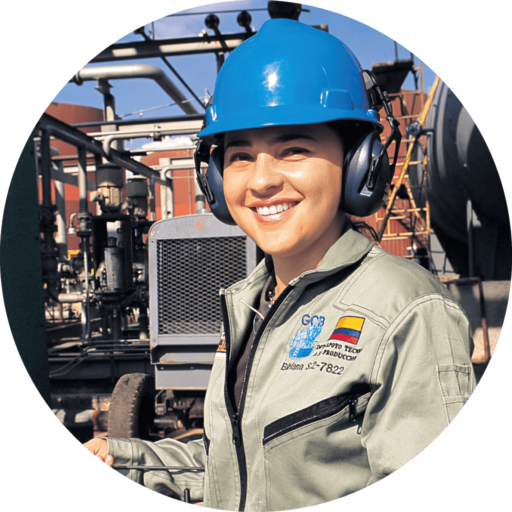
Ecopetrol has implemented an HSE Management System to establish the necessary elements for the Company to adequately manage its risks, in order to protect life and foster the protection of the environment. The HSE Management System was established based on current national regulations (Decree 1072 of 2015) and international standards (ISO 45001 and ISO14001).
The System consists of a logical and phased process, based on continuous improvement and including culture, leadership, politics, organization, planning, implementation, evaluation, auditing, and improvement efforts, in order to anticipate, recognize, assess, and control the risks that may affect safety and health at work and in the environment.
The System covers the processes of oil and gas exploration and production, the production of refined products and petrochemicals, the trading of hydrocarbons, and administrative and/or business support processes. Process owners are responsible for implementing the sub-elements of the HSE Management System, which must be consistent with the risks associated with each particular process.
Within the framework of the “Life First” cultural principle, Company employees are provided with a tool to report unsafe behaviors and conditions electronically or via a telephone line. Also, visits, inspections, and conversation spaces are promoted between leaders and collaborators to report hazardous situations and conditions and improve the established controls.
On the other hand, Ecopetrol fosters autonomy and self-care as part of its prevention approach. As a fundamental element of the job control practice, whenever an unsafe act or condition is identified, “Everyone has the obligation and authority to stop any unsafe task.” This premise has been disclosed from Senior Management to all direct employees and contractor personnel. The next step is to hold a safety conversation to inform the people involved of the act or condition identified so that it can be corrected by jointly reassessing whether the activity can continue safely or whether it should be suspended until the unsafe conditions are solved.
Ecopetrol has different means of communication available to workers and contractors, where they can raise queries or submit complaints about possible retaliations that they may be subject to after reporting a situation associated with the unsafe execution of any task.
Although there are different methodologies for hazard identification and risk analysis and assessment depending on the type of situation, Ecopetrol uses the “bowtie” methodology for everything associated with industrial safety, and for the identification of occupational health hazards and risks, the Company applies the HRA (Health Risk Assessment) methodology. A task risk analysis must be conducted for all activities, previously prepared and approved by competent personnel of the implementing party and the person in charge of the area where the activity will take place. Each hazard identification and risk analysis and assessment methodology defines intervention priorities based on controls aligned with the controls hierarchy laid out in the ISO 45001:2018 standard. The risk analysis is continuously applicable to each activity, and the health and “bowtie” risks are updated periodically or each time a new hazard is identified, a new production or technological process is introduced, or a change is made that poses risks on health, people, or the environment.

All incidents or alarms associated with environmental, industrial safety, process safety, and occupational health matters in the Company trigger a process of reporting, recording, investigating, and implementing corrective actions, in order to ensure the incorporation of lessons learned, and thus reduce the probability of recurrence and improve the performance of the Company.
Based on the actual or potential consequence of the incident, the investigation team is assigned as defined by the Company. The causes that originated the incident and the necessary actions to avoid the recurrence thereof are established by identifying critical factors and immediate causes associated with unsafe conditions or behaviors and determining basic causes or root causes. Subsequently, the lesson learned is communicated and incorporated in the applicable area. Compliance with the measures resulting from incidents is monitored using the technological tool determined by the Company.
Overall, the consolidated results of the investigations are analyzed to identify common causes and their trends, and thus define actions to improve the HSE Management System.
Ecopetrol has an Occupational Health Department responsible for:
01
Leading the management of preventive and occupational medicine at Ecopetrol.
02
Defining and generating the necessary guidelines, guides, procedures, instructions, formats, and tools for the adequate provision of occupational medicine services.
03
Planear y asegurar los recursos presupuestales necesarios para apalancar la gestión en salud ocupacional.
04
Providing technical support to Ecopetrol’s Business Units in occupational medicine and other occupational health issues, participating in strategic scenarios to control occupational risks in work environments.
05
Monitoring compliance with preventive and occupational medicine guidelines and standards.
05
Participating in the investigation of work accidents and occupational diseases.
To guarantee the quality of occupational health services, Ecopetrol, through the Occupational Health Department, offers the induction process to the staff of companies that provide preventive and occupational medicine services.
This induction includes the presentation of hygiene, ergonomics, and psychosocial results reporting on the health conditions of the workers, which must be used for promotion and prevention activities and for the structuring of comprehensive action plans targeting the individual. Furthermore, a quality assessment is conducted in the provision of occupational health services in accordance with current regulations in Colombia.
(GRI 403-9, 11-9-10) (WEF 15, 25E)
Ecopetrol places significant emphasis on understanding, monitoring, and controlling the impacts on the health and safety of workers. No fatal accidents were recorded in 2022, and 13 recordable injury cases were materialized, with 62% leading to registered leaves of absences and 38% giving rise to restricted work or medical treatment. Overall, the body parts that were most affected by these accidents were the upper and lower limbs.
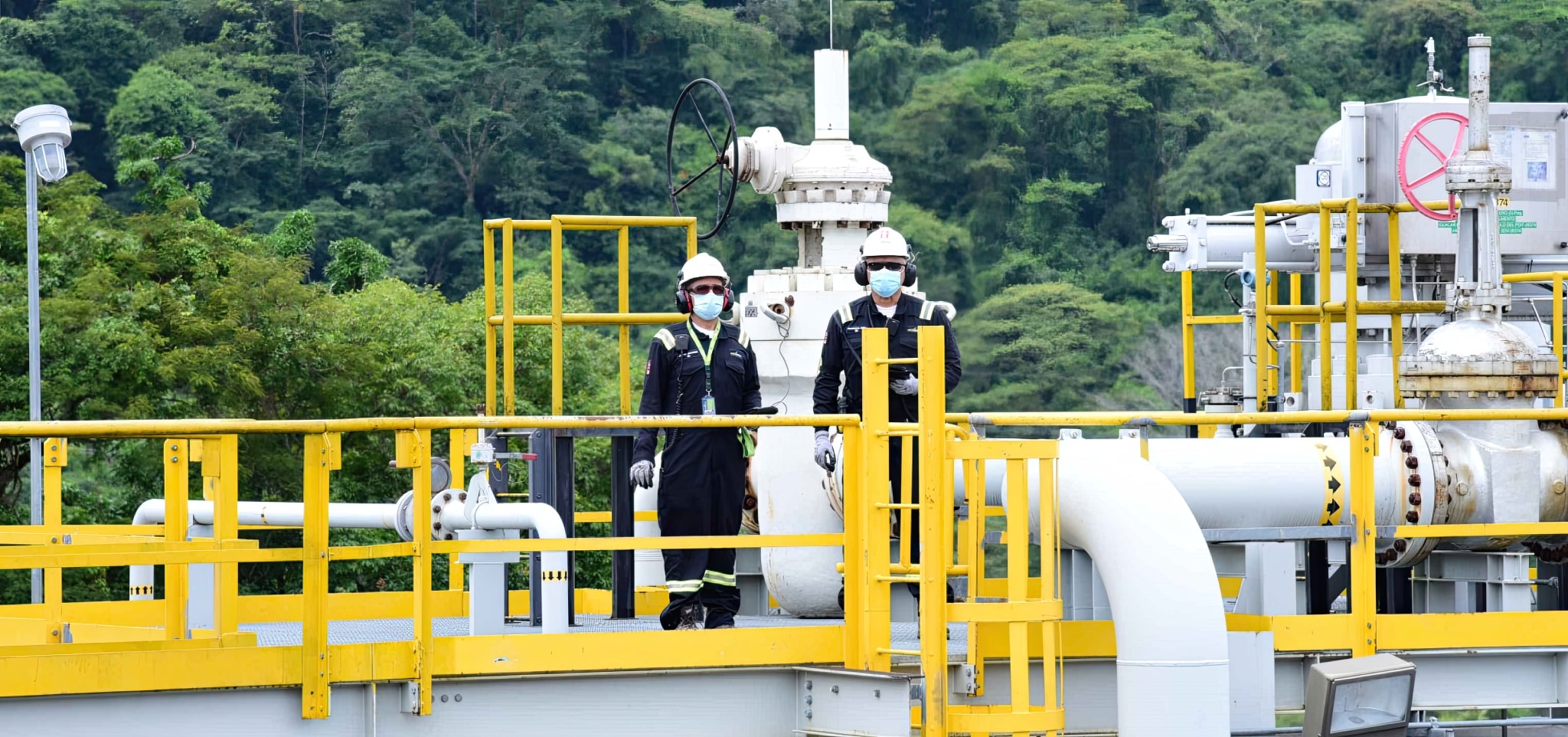
(GRI 403-9, 11-9-10) (WEF 15, 25E)
| Employees | Unit of measurement | 2019 | 2020 | 2021 | 2022 |
|---|---|---|---|---|---|
| Number of hours worked | # | 27,788,636.32 | 28,111,374.41 | 27,904,070.59 | 28,036,721.39 |
| Number of deaths resulting from an occupational injury | # | 1 | 1 | 0 | 0 |
| Number of work-related injuries with severe consequences (not including deaths) | # | 0 | 0 | 0 | 1 |
| Number of recordable occupational injuries | # | 24 | 19 | 9 | 11 |
| Death rate resulting from occupational injuries | Index | 0.036 | 0.036 | 0 | 0 |
| Severe consequence occupational injury rate (not including fatalities) | Index | 0 | 0 | 0 | 0.036 |
| Recordable occupational injury rate* | Index | 0.864 | 0.676 | 0.323 | 0.392 |
* The Recordable Workplace Injury Rate includes fatalities, accidents involving lost-time, restricted work, and medical treatment; unlike LTIFR, which only includes accidents involving lost-time and fatalities.
(GRI 403-9, 11-9-10) (WEF 15, 25E)
Ecopetrol places significant emphasis on understanding, monitoring, and controlling the impacts on the health and safety of contractors. No fatal accidents were recorded in 2022, and 43 recordable cases materialized, with 77% leading to registered leaves of absences and 23% giving rise to restricted work or medical treatment. Overall, the body parts that were most affected by these accidents were the upper and lower limbs. It is worth highlighting a 22% reduction in the number of recordable cases compared to 2021, mainly as a result of improvements in the risk analysis of operating activities, thus strengthening HSE skills and prior risk assurance.
(GRI 403-9, 11.9.10) (WEF 15, 25E)
| Contractors | Unit of measurement | 2019 | 2020 | 2021 | 2022 |
|---|---|---|---|---|---|
| Number of hours worked | # | 128,419,931.82 | 105,233,715.45 | 117,935,944.3 | 139,953,435.23 |
| Number of deaths resulting from an occupational injury | # | 2 | 2 | 0 | 0 |
| Number of work-related injuries with severe consequences (not including deaths) | # | 1 | 1 | 0 | 0 |
| Number of recordable occupational injuries | # | 70 | 48 | 55 | 45 |
| Death rate resulting from occupational injuries | Index | 0.016 | 0.019 | 0 | 0 |
| Severe consequence occupational injury rate (not including fatalities) | Index | 0.008 | 0.01 | 0 | 0 |
| Recordable occupational injury rate | Index | 0.545 | 0.456 | 0.466 | 0.322 |
(GRI 403-9, 11.9.10) (WEF 15, 25E)
| Occupational illnesses and diseases suffered by employees | Unit of measurement | 2019 | 2020 | 2021 | 2022 |
|---|---|---|---|---|---|
| Number of deaths resulting from an occupational illness or disease. | # | 0 | 0 | 0 | 0 |
| Number of recordable occupational illnesses and disease cases | # | 3 | 1 | 3 | 1 |
(GRI 403-9, 11-9-10) (WEF 15, 25E)
(GRI 403-2, 11-9-3) (ECP 002)
| LTIFR | Unit of measurement | 2019 | 2020 | 2021 | 2022 |
|---|---|---|---|---|---|
| Employees | LTIFR | 0.58 | 0.43 0 | 0.11 | 0.25 |
| Data coverage (as a % of employees, operations, or revenue) | % | 100 | 100 | 100 | 100 |
* The information reported spans across the Ecopetrol Group, which includes the following Companies: Hocol, Reficar, Esenttia, Cenit, ODL, ODC, and Ocensa.
(GRI 403-2, 11-9-3) (ECP 002)
| LTIFR | Unit of measurement | 2019 | 2020 | 2021 | 2022 |
|---|---|---|---|---|---|
| Contractors | LTIFR | 0.33 | 0.36 0 | 0.31 | 0.24 |
| Data coverage (as a % of contractors, operations, or revenue) | % | 100 | 100 | 100 | 100 |
* The information reported spans across the Ecopetrol Group, which includes the following Companies: Hocol, Reficar, Esenttia, Cenit, ODL, ODC, and Ocensa.
Fatal accidents involving employees and contractors are monitored at Ecopetrol. It is worth highlighting that no employee or contractor fatalities were reported in 2022.
| Fatalities | Unit of measurement | 2019 | 2020 | 2021 | 2022 |
|---|---|---|---|---|---|
| Empleados | LTIFR | 1 | 1 | 0 | 0 |
| Contratistas | % | 2 | 2 | 0 | 0 |
(GRI 403-2, 11-9-3) (ECP 003)
| TRIFR | Unit of measurement | 2019 | 2020 | 2021 | 2022 |
|---|---|---|---|---|---|
| Empleados | TRIRF | 0.864 | 0.676 | 0.323 | 0.392 |
| Data coverage (as a % of employees, operations, or revenue) | % | 100 | 100 | 100 | 100 |
* The information reported spans across the Ecopetrol Group, which includes the following Companies: Hocol, Reficar, Esenttia, Cenit, ODL, ODC, and Ocensa.
(GRI 403-2, 11-9-3) (ECP 003)
| TRIFR | Unit of measurement | 2019 | 2020 | 2021 | 2022 |
|---|---|---|---|---|---|
| Contractors | TRIRF | 0.545 | 0.456 | 0.466 | 0.322 |
| Data coverage (as a % of contractors, operations, or revenue) | % | 100 | 100 | 100 | 100 |
* The information reported spans across the Ecopetrol Group, which includes the following Companies: Hocol, Reficar, Esenttia, Cenit, ODL, ODC, and Ocensa.
(SASB EM-EP-320a.1) [sfc src=”XVI”]
| Required information | Unit of measurement | 2019 | 2020 | 2021 | 2022 |
|---|---|---|---|---|---|
| Total hours worked in the year | Hours | 10,723,986.18 | 9,567,670.91 | 9,110,190.95 | 1,145,713.16 |
| Number of fatalities presented in the year | # | 0 | 0 | 0 | 0 |
| Number of registered work injuries | # | 13 | 6 | 4 | 3 |
| Number of occupational diseases registered | # | 5 | 3 | 1 | 2 |
| Number of occupational diseases registered | # | 2 | 1 | 0 | 1 |
| Near misses registered in the year | # | NA | NA | NA | NA |
| Total Recordable Incident Rate (TRIR) | Rate | 1.40 | 0.73 | 0.73 | 0.26 |
| Fatality rate | Rate | 0 | 0 | 0 | 0 |
| Near miss frequency rate | Rate | NA | NA | NA | 0 |
(SASB EM-EP-320e.1) (SFC XVI)
| Required information | Unit of measurement | 2019 | 2020 | 2021 | 2022 |
|---|---|---|---|---|---|
| Total hours worked in the year | Hours | 49,932,323.82 | 30,384,734.01 | 34,789,757.5 | 83,006,505 |
| Number of fatalities presented in the year | # | 2 | 0 | 0 | 0 |
| Number of registered work injuries | # | 38 | 15 | 19 | 32 |
| Number of registered leaves of absences | # | 24 | 13 | 16 | 26 |
| Number of occupational diseases registered | # | NA | NA | NA | NA |
| Near misses registered in the year | # | NA | NA | NA | NA |
| Total Recordable Incident Rate (TRIR) | Rate | 0.76 | 0.49 | 0.55 | 0.14 |
| Fatality rate | Rate | 0.19 | 0 | 0 | 0 |
| Near miss frequency rate | Rate | NA | NA | NA | 0 |
(SASB EM-EP-320a.1) (SFC XVI)
| Required information | Unit of measurement | 2019 | 2020 | 2021 | 2022 |
|---|---|---|---|---|---|
| Total hours worked in the year | Hours | 60,656,309.99 | 39,952,404.92 | 43,899,948.45 | 94,465,218.16 |
| Number of fatalities presented in the year | # | 2 | 0 | 0 | 0 |
| Number of registered work injuries | # | 51 | 21 | 23 | 35 |
| Number of registered leaves of absences | # | 29 | 16 | 17 | 28 |
| Number of occupational diseases registered | # | 2 | 1 | 0 | 1 |
| Near misses registered in the year | # | NA | NA | NA | 0 |
| Total Recordable Incident Rate (TRIR) | Rate | 0.87 | 0.55 | 0.52 | 0.135 |
| Fatality rate | Rate | 0.03 | 0 | 0 | 0 |
| Near miss frequency rate | Rate | NA | NA | NA | 0 |
*Ecopetrol does not have short-term employees.
Note: Ecopetrol does not have an indicator for near misses.
(SASB EM-EP-320a.1) (SFC XVI)
| Required information | Unit of measurement | 2022 |
|---|---|---|
| Total training hours in health, safety, and emergency management provided to employees throughout the year | Hours | 155,301 |
| Total number of company employees | # | 9,496 |
| Average training hours in health, safety, and emergency management for employees | Hours | 16 |
(SASB EM-EP-320e.1) (SFC XVI)
| Required information | Unit of measurement | 2022 |
|---|---|---|
| Total training hours in health, safety, and emergency management provided to employees throughout the year | Hours | 43,192 |
| Total number of company employees | # | 5,987 |
| Average training hours in health, safety, and emergency management for employees | Hours | 7 |
| Required information | Unit of measurement | 2022 |
|---|---|---|
| Total training hours in health, safety, and emergency management provided to employees throughout the year | Hours | 198,493 |
| Total number of Company employees | # | 15,483 |
| Average training hours in health, safety, and emergency management for employees | Hours | 13 |
(SASB EM-EP-320e.2) (SFC XVI)
Management systems used to embed a culture of safety throughout the exploration and production life cycle.
Ecopetrol S.A. has deployed an HSE Management System to establish the necessary elements for the Company to adequately manage its risks, in order to protect life and foster the protection of the environment by defining the basic mandatory requirements under the HSE Management System.
The HSE Management System was established based on current national regulations (Decree 1072 of 2015) and international standards (ISO 45001 and ISO14001).
The HSE Management System consists of a logical and phased process, based on continuous improvement, involving culture, leadership, policy, organization, planning, implementation, evaluation, auditing, and actions for improvement in order to anticipate, recognize, evaluate, and control the risks that may affect safety and health at work and in the environment.

| Impacted stakeholder groups | Areas managing the impacts | Ecopetrol business line or segments generating the highest impact |
|---|---|---|
| Suppliers, contractors, and their workers | VHSE | Upstream |
| Society and Communities | VPU | Midstream |
| Employees | VRP | Downstream |
| Low emission solutions |
Within the framework of its due diligence efforts, Ecopetrol recognizes that, in its relations with suppliers and contractors, the Company must implement strict guidelines on the matter to prevent any type of accident or risk for rightsholders.
Within the framework of its due diligence efforts, Ecopetrol recognizes that, in its relations with suppliers and contractors, the Company must implement strict guidelines on the matter to prevent any type of accident or risk for rightsholders.
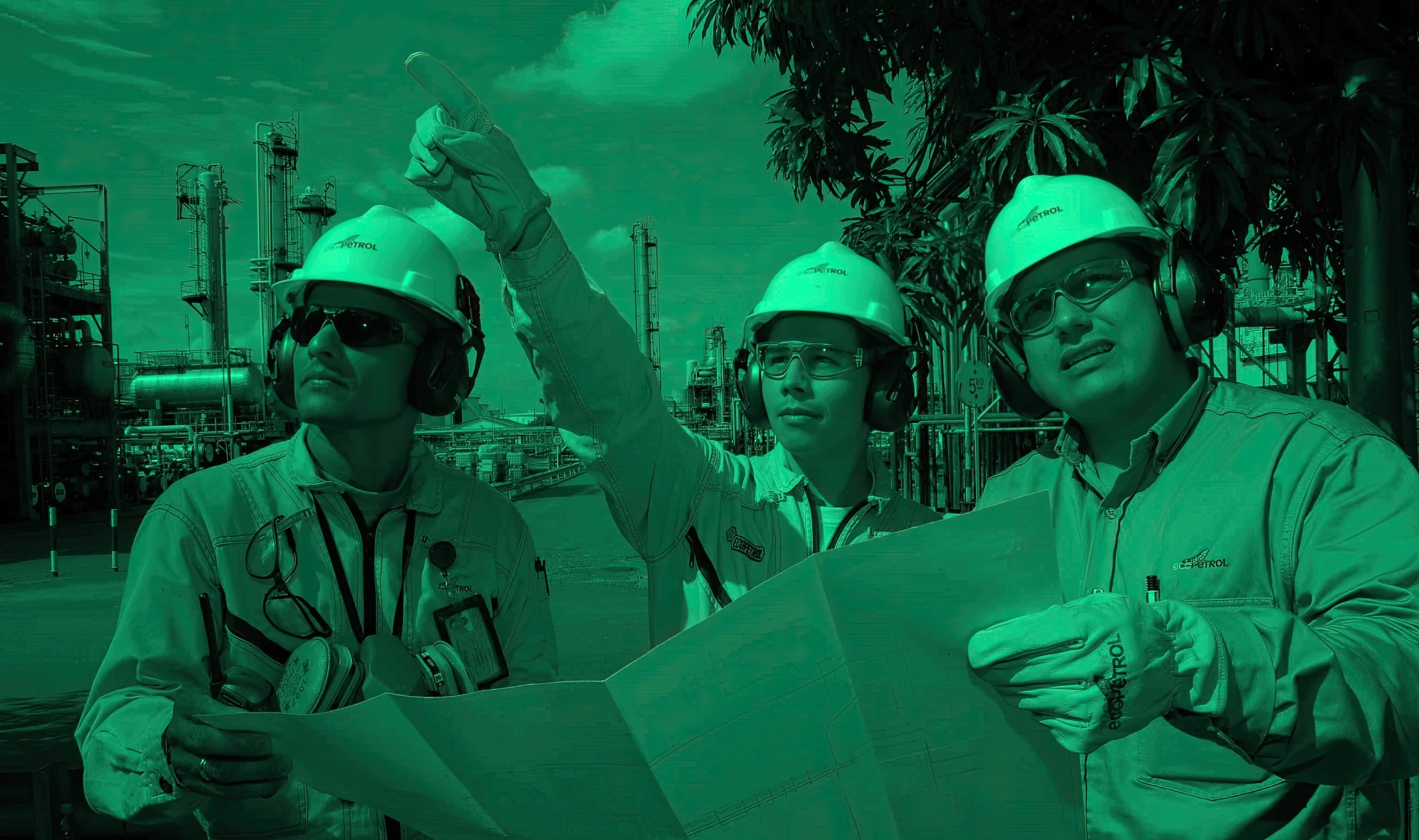
Process safety is reflected in the 2040 Strategy: “Energy that Transforms” and in Ecopetrol’s cultural principle “Life First,” which guides the HSE-related course of action for the Company’s work teams while confirming their commitment to the preservation of life in its different manifestations, resulting in the following behaviors:
1

We take care of ourselves and take care of others.
2
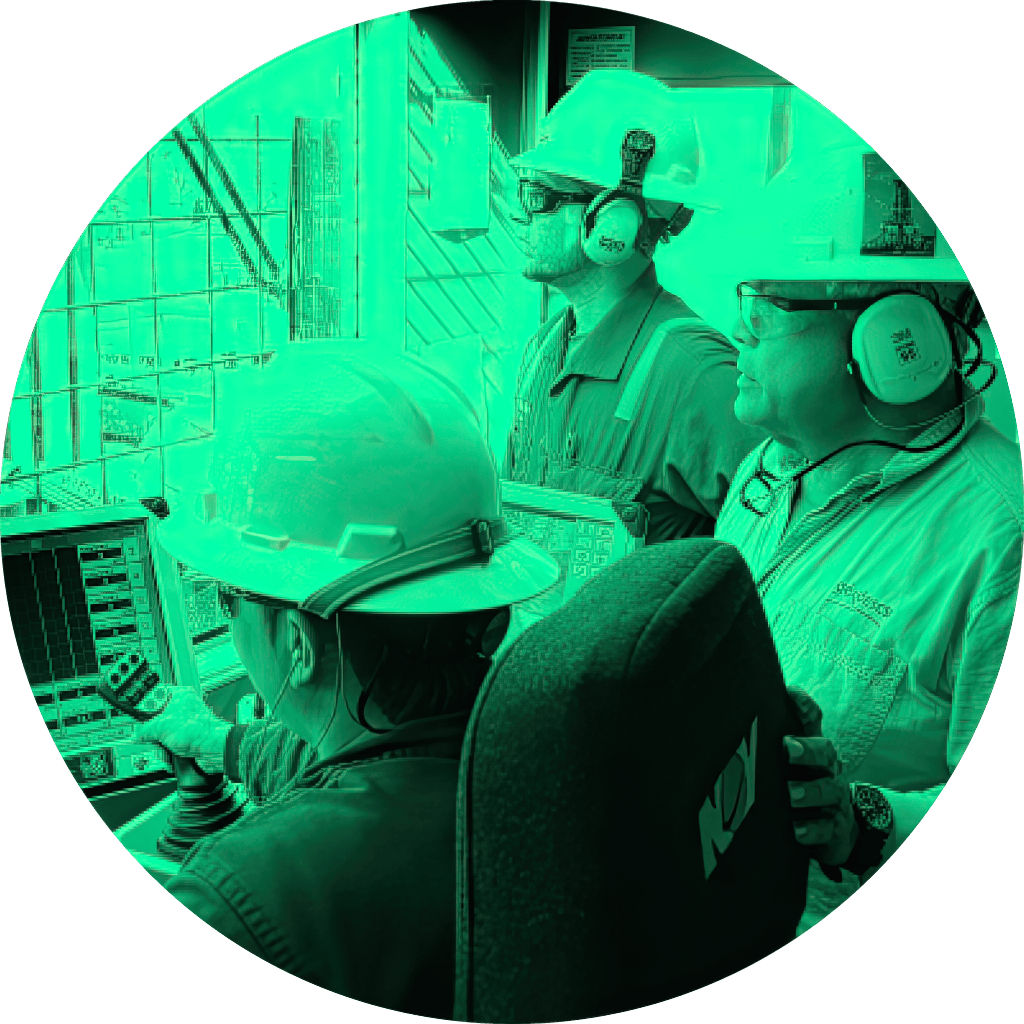
We act with rigor and discipline in relation to the HSE management system.
3

We take care of the environment and our surroundings with future generations in mind.